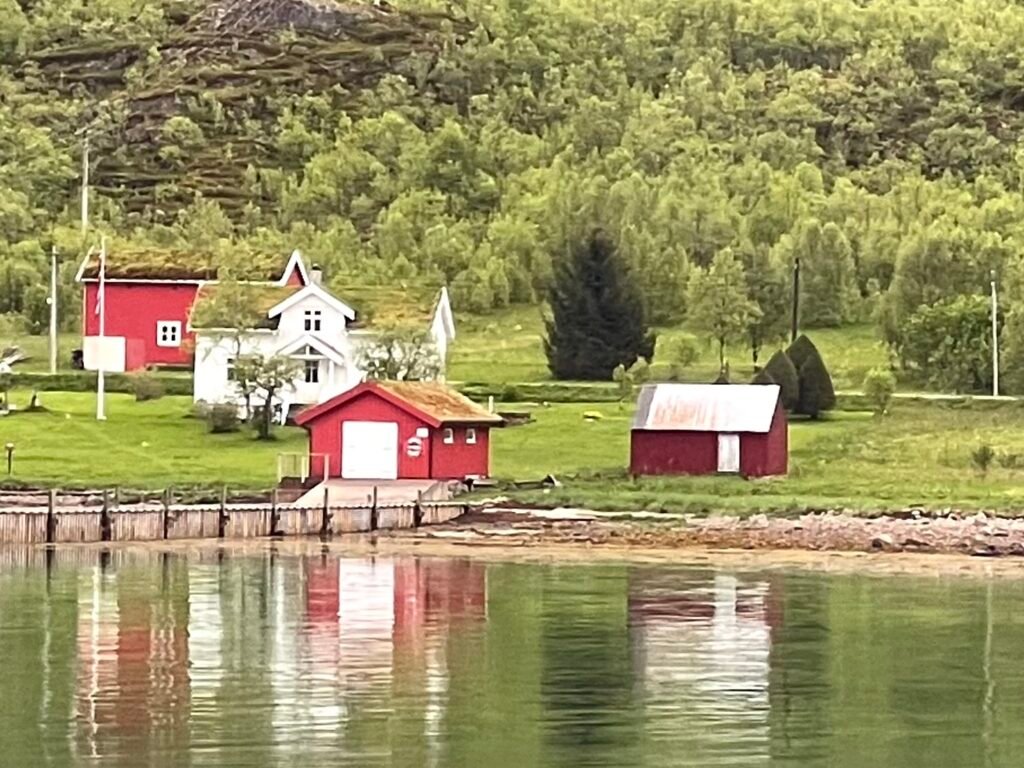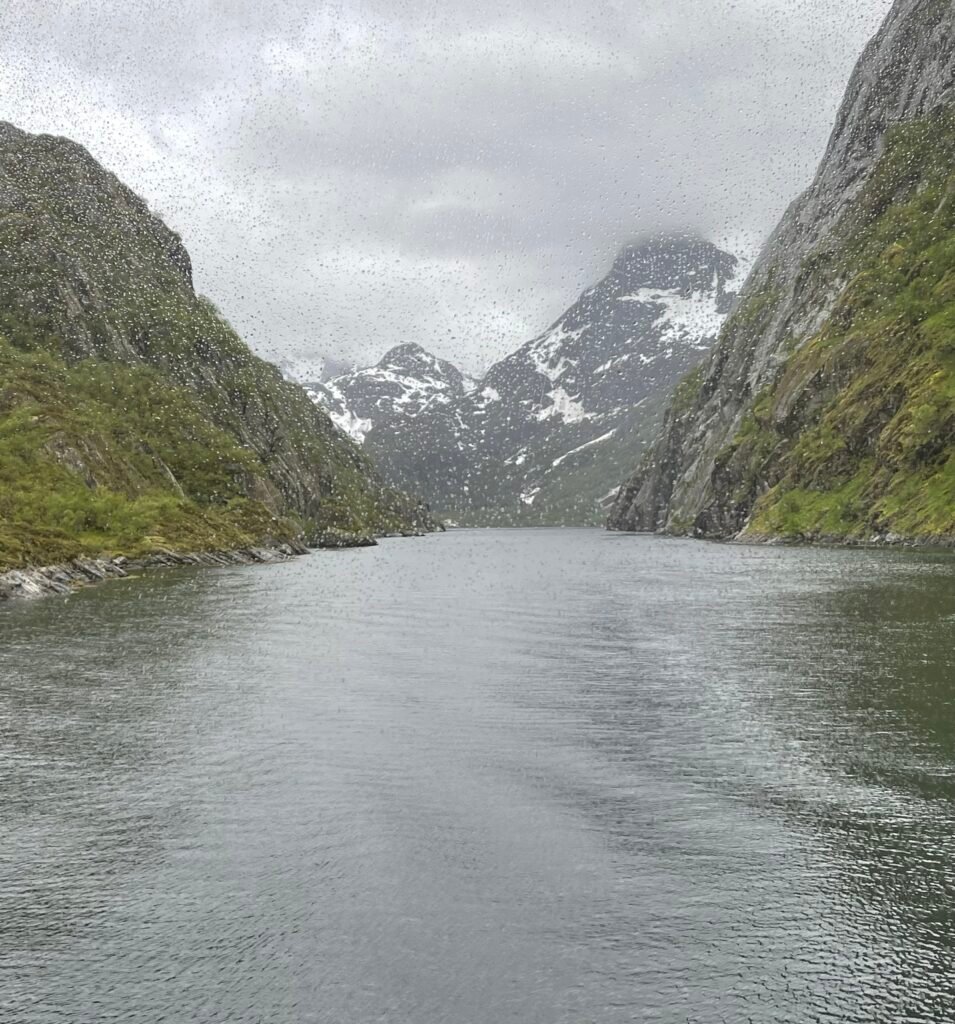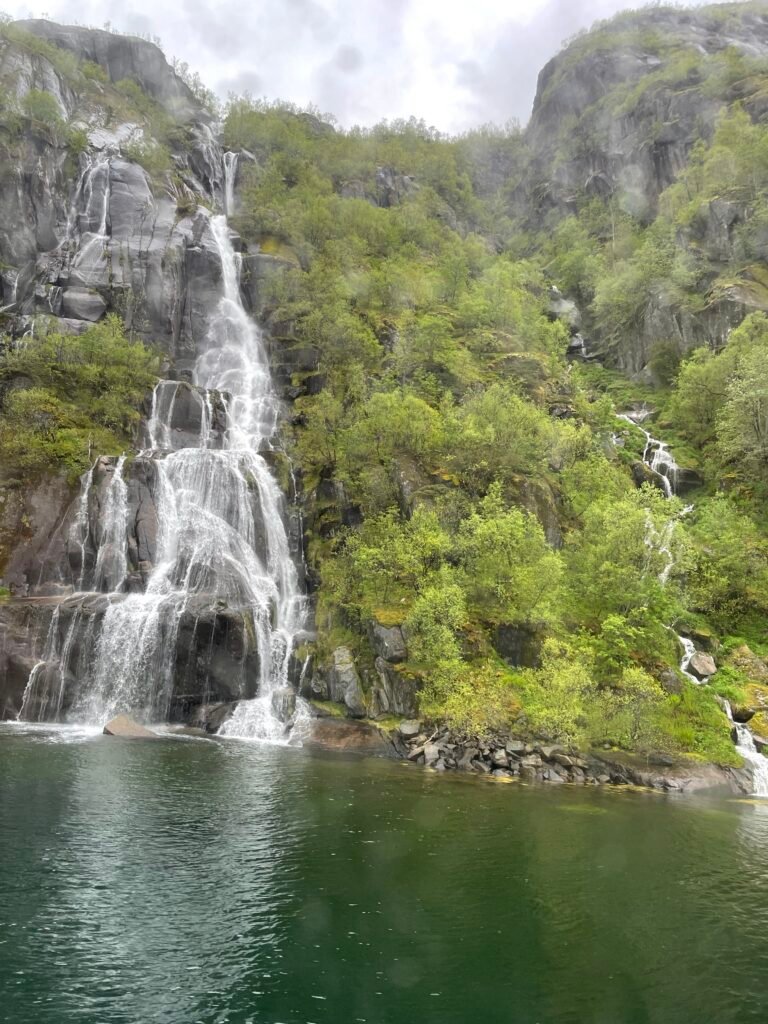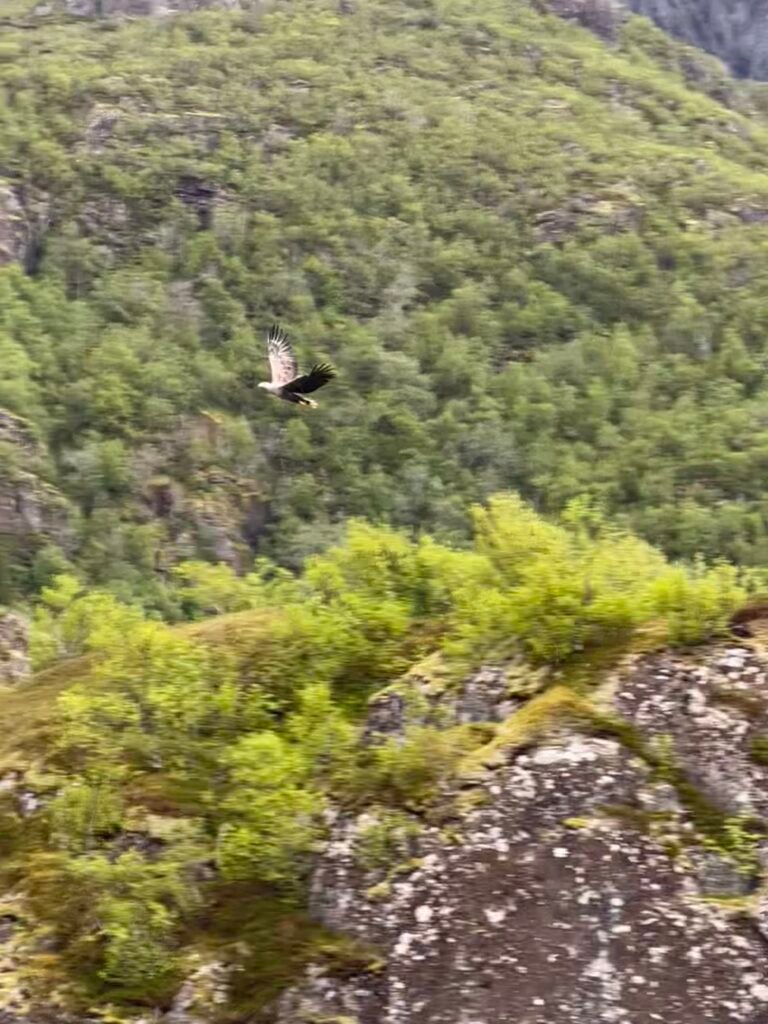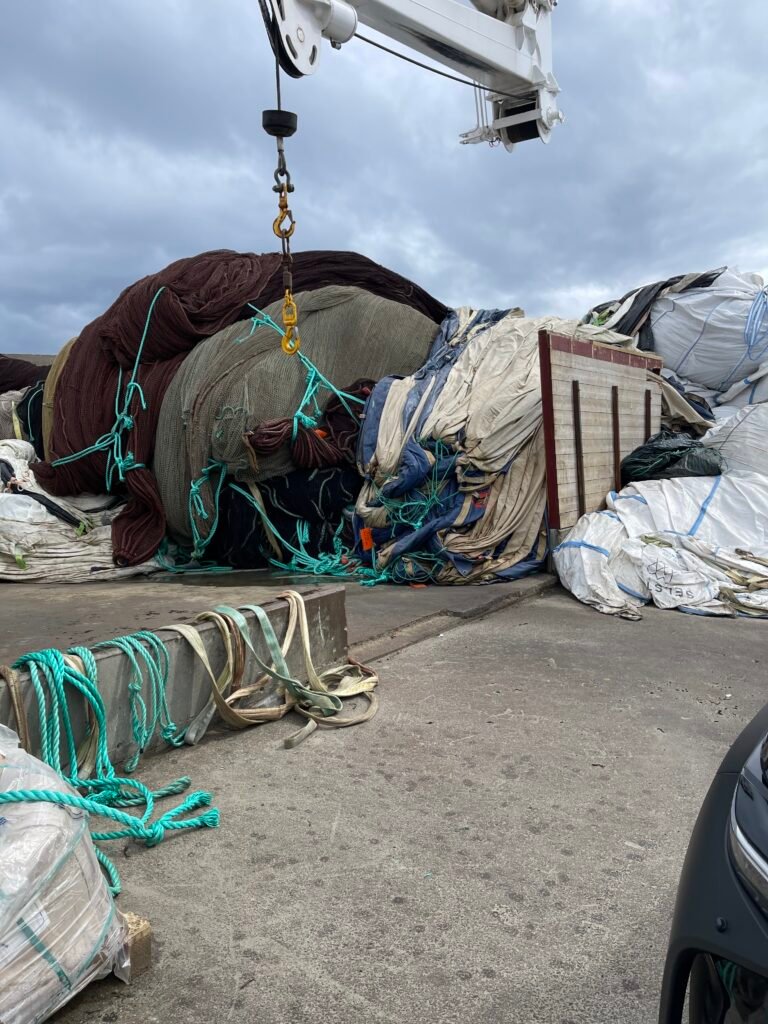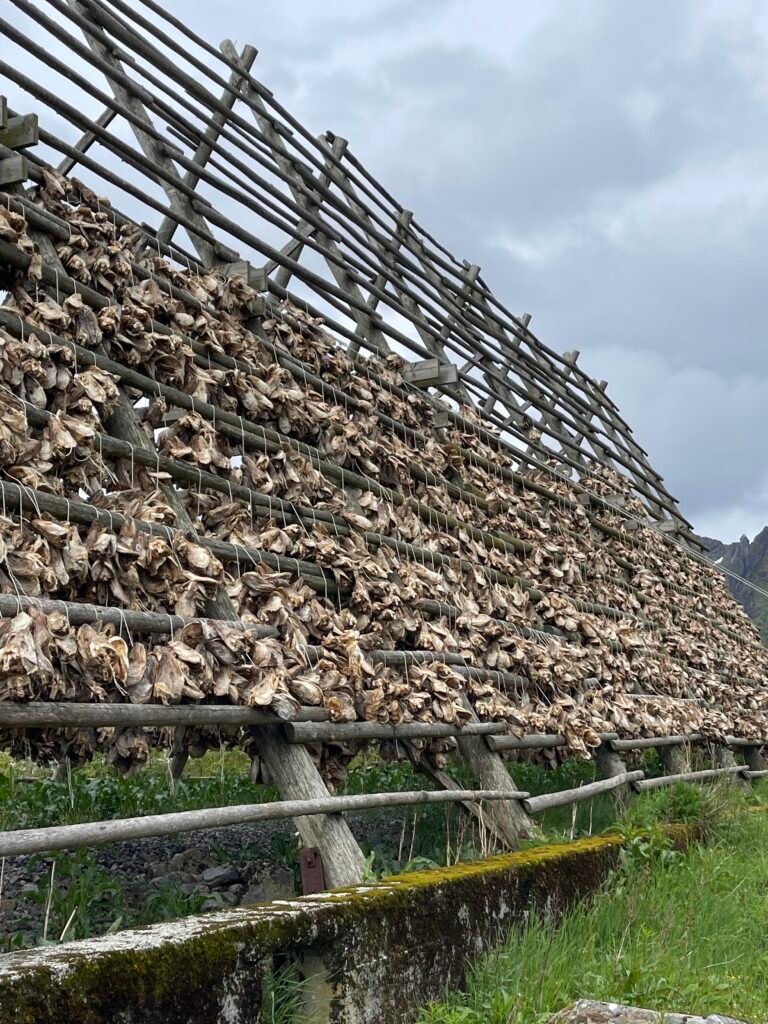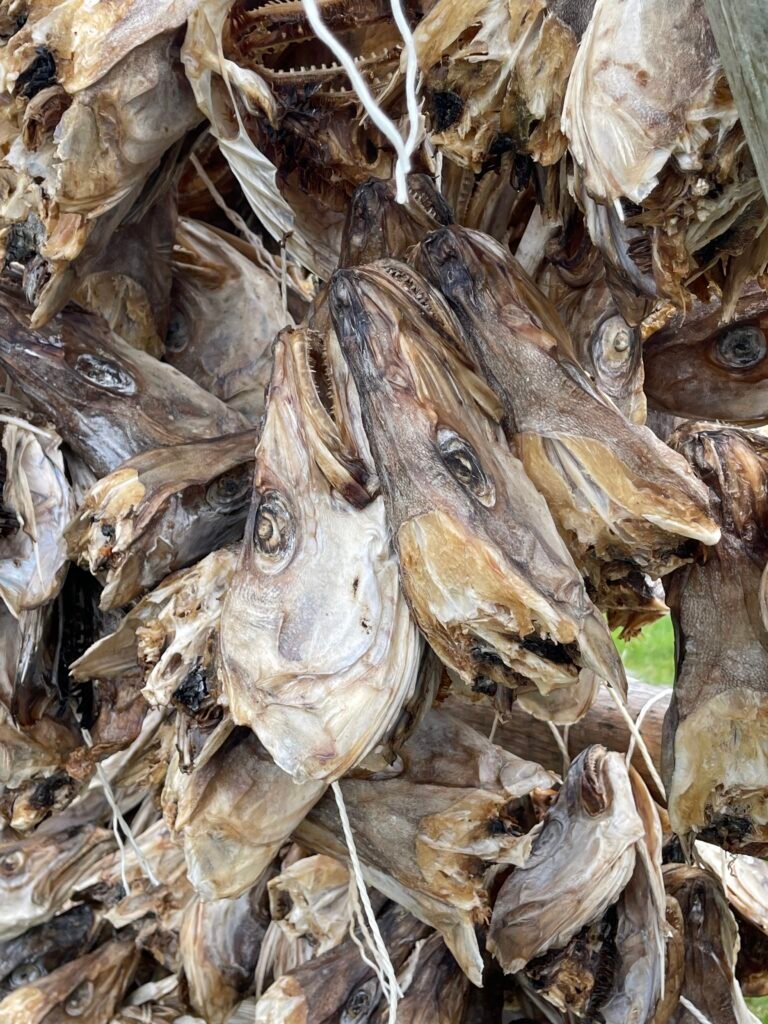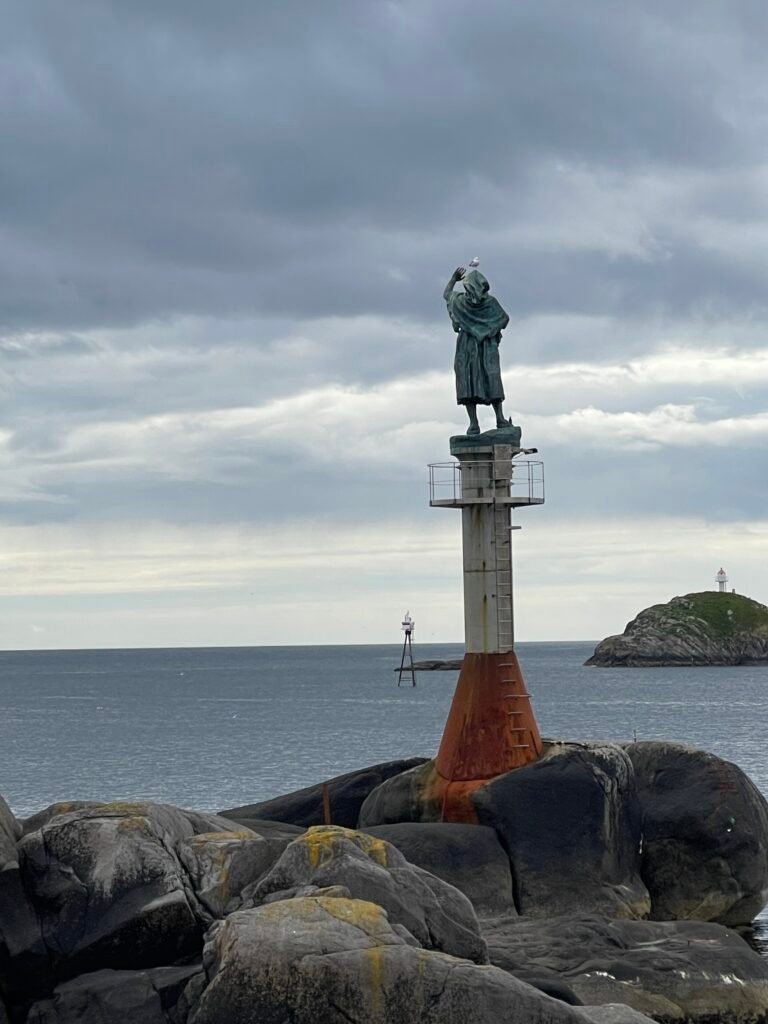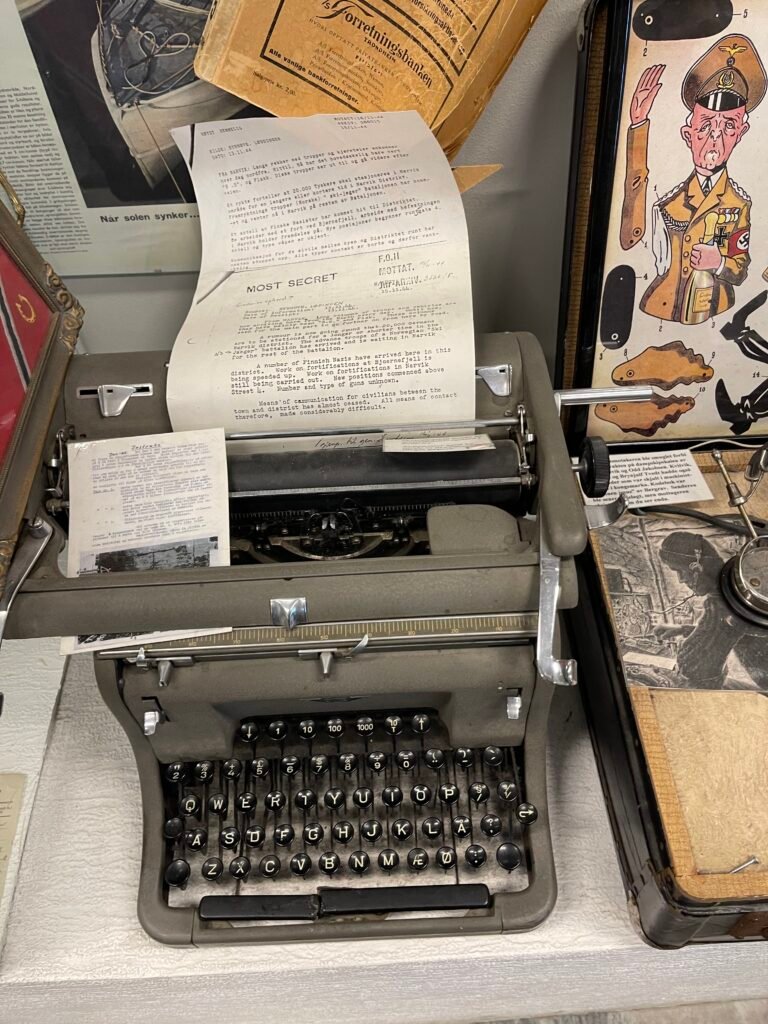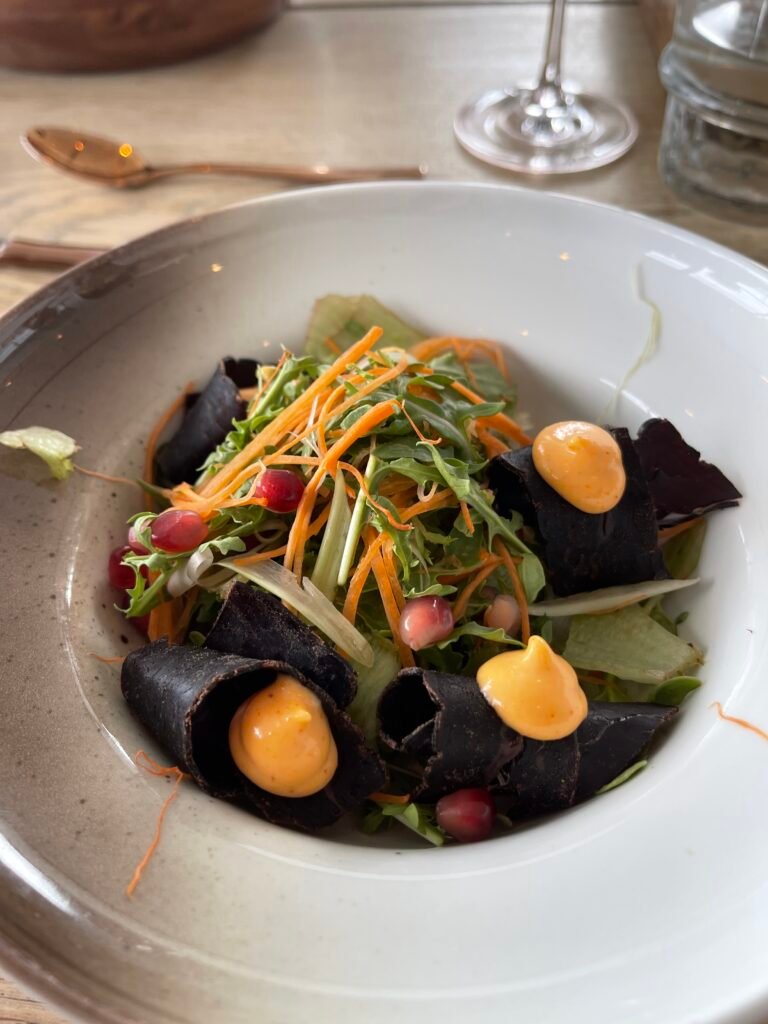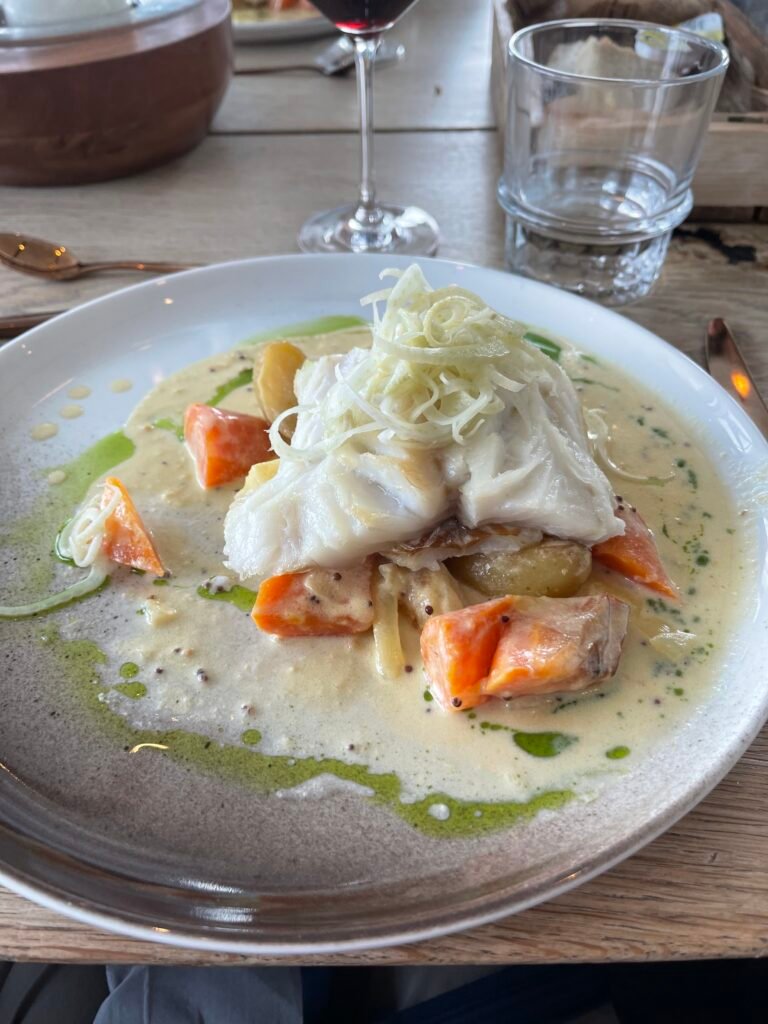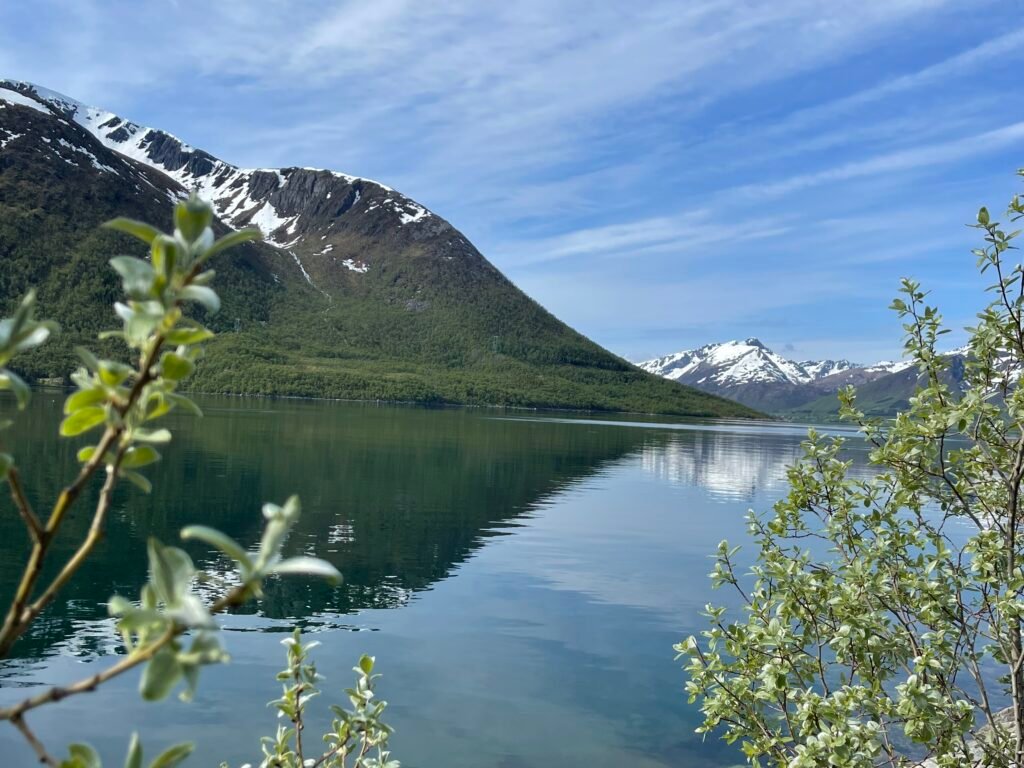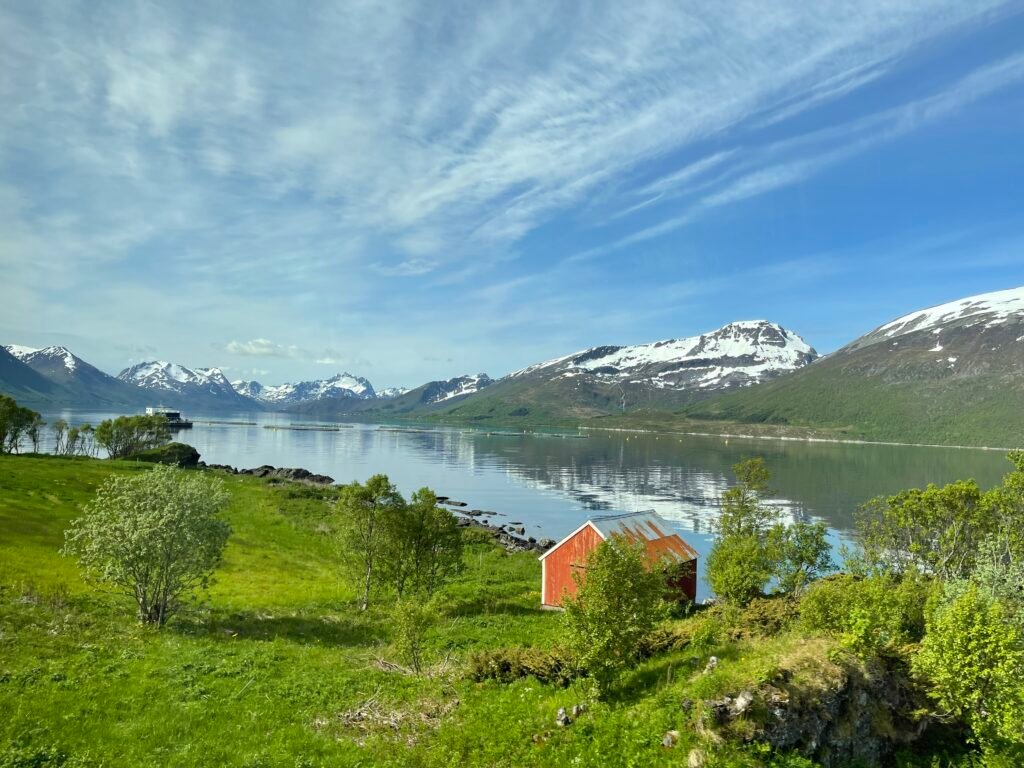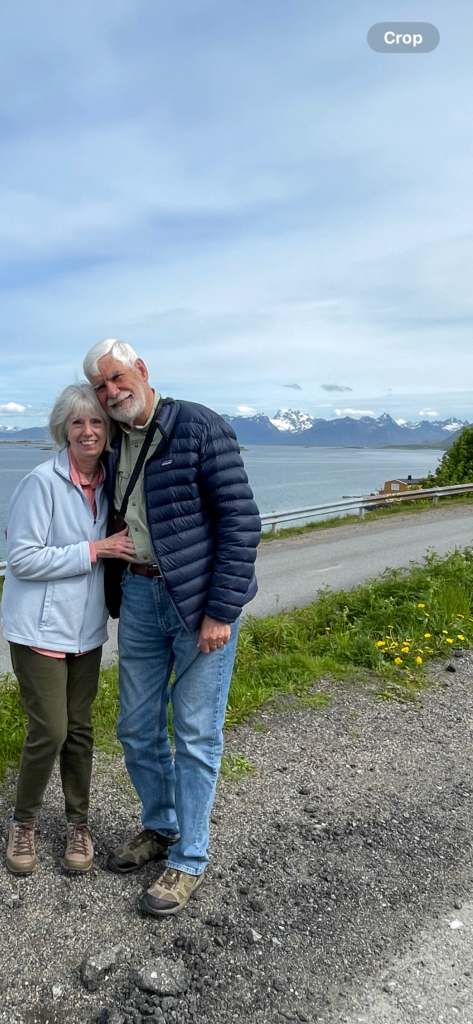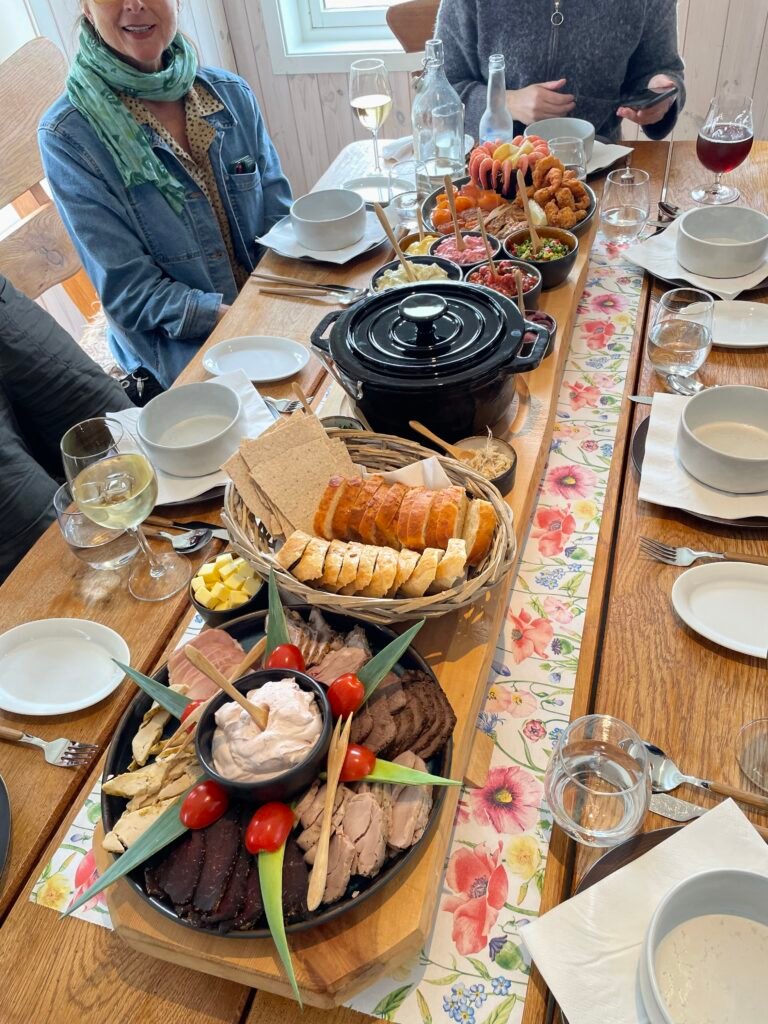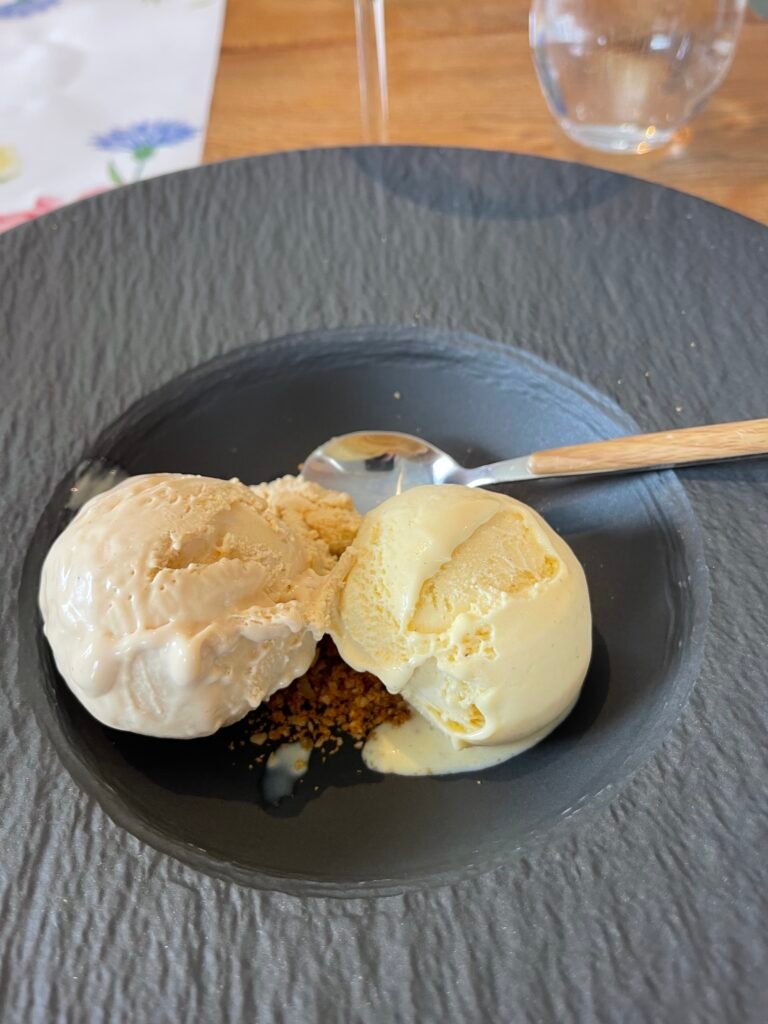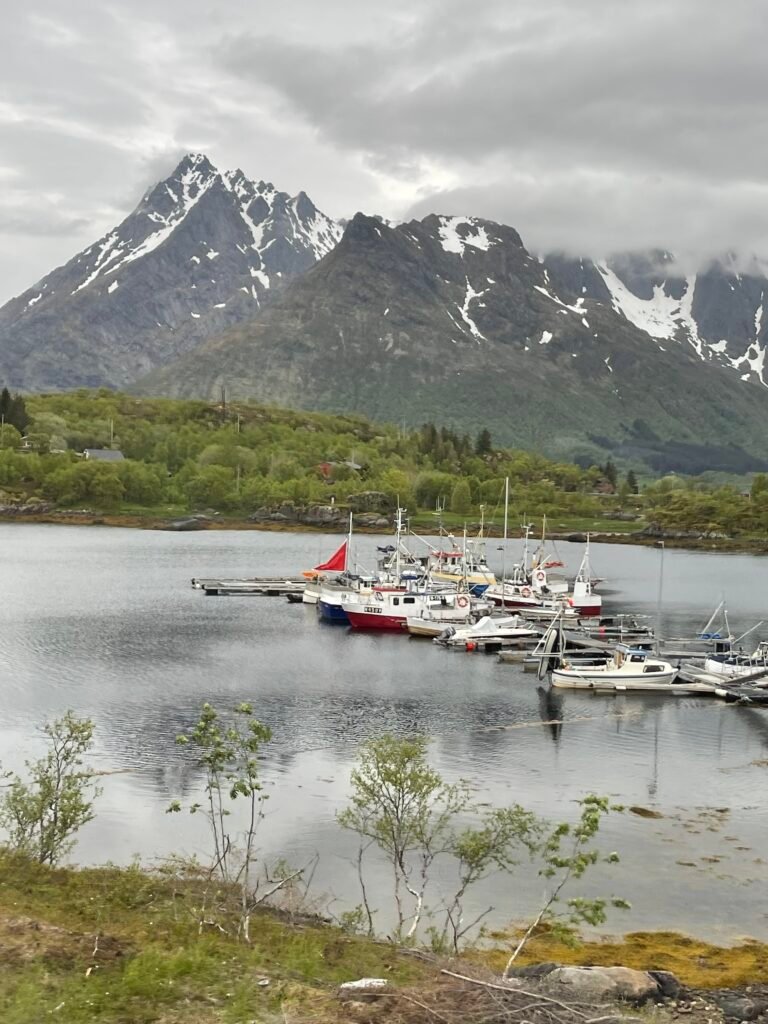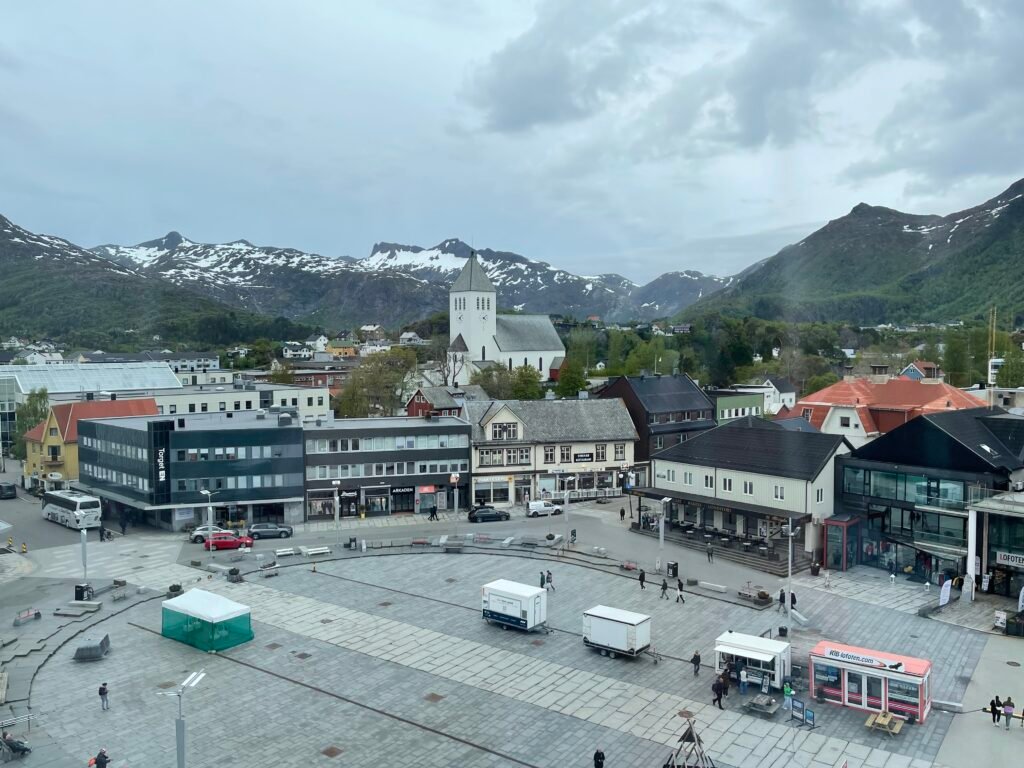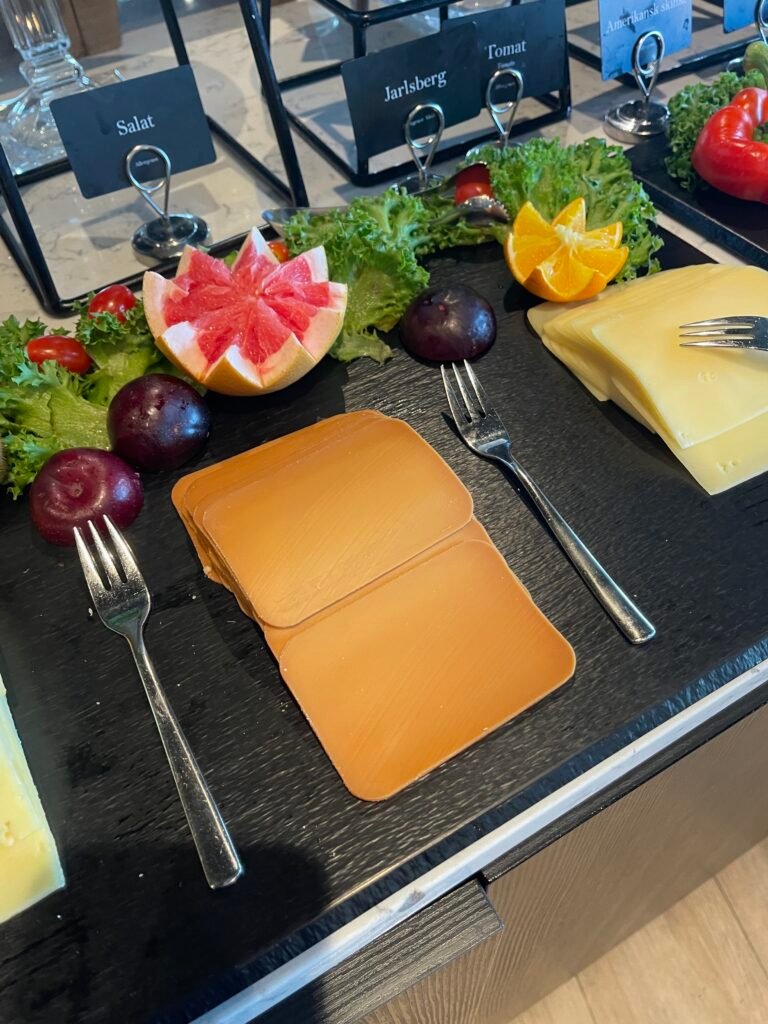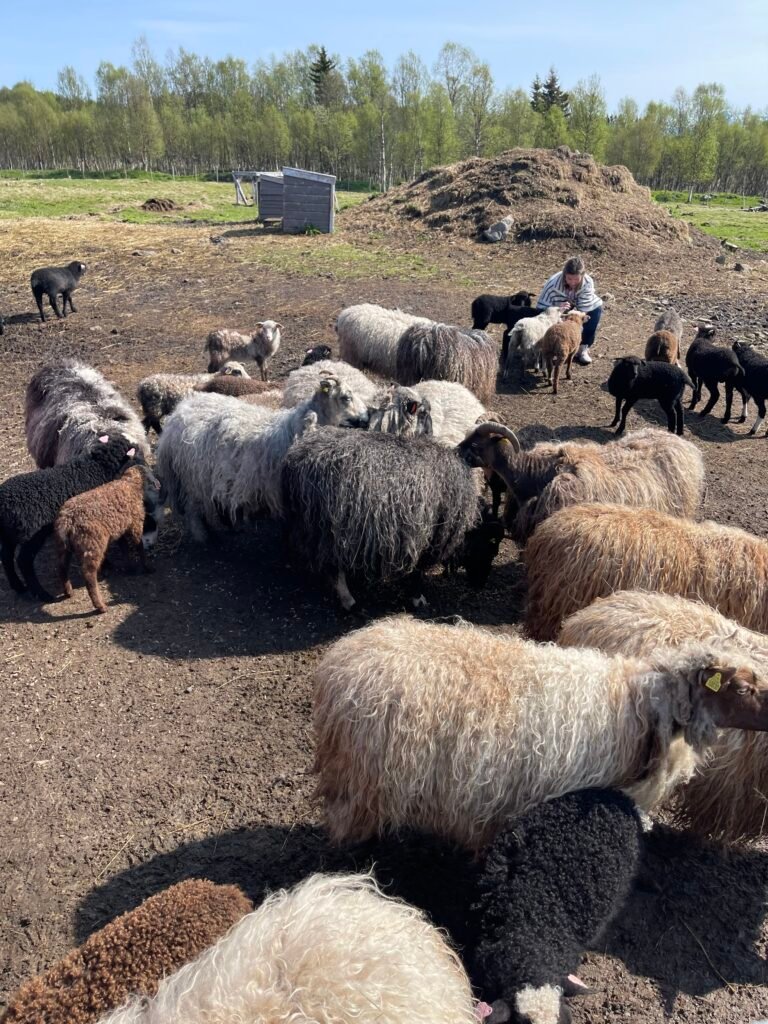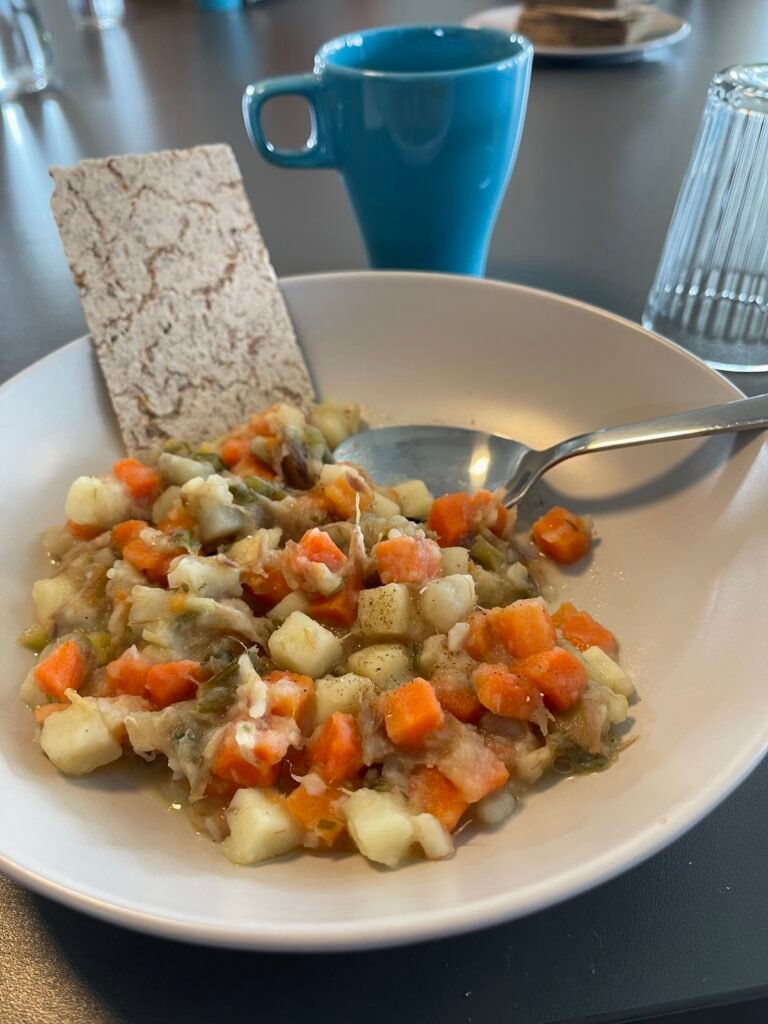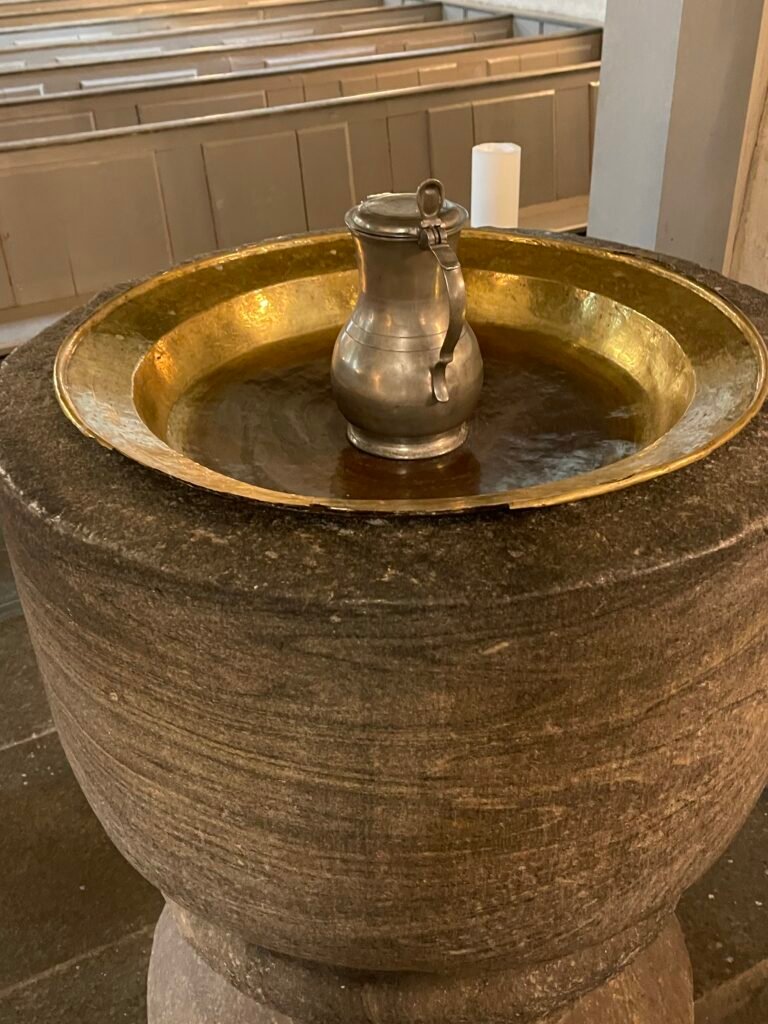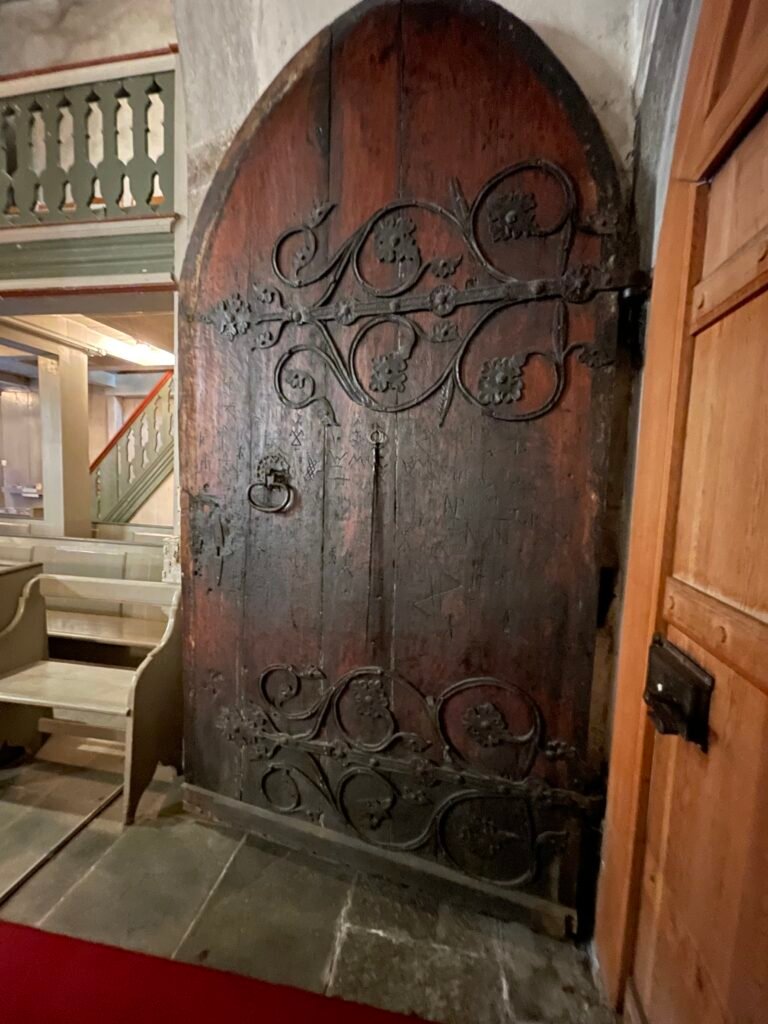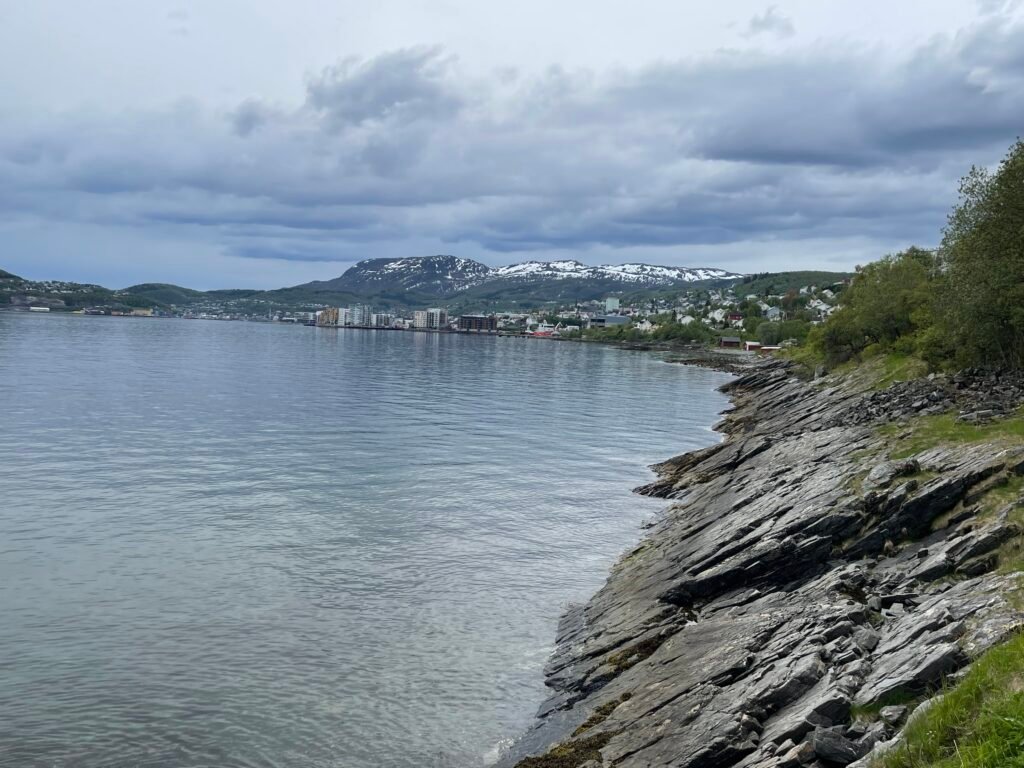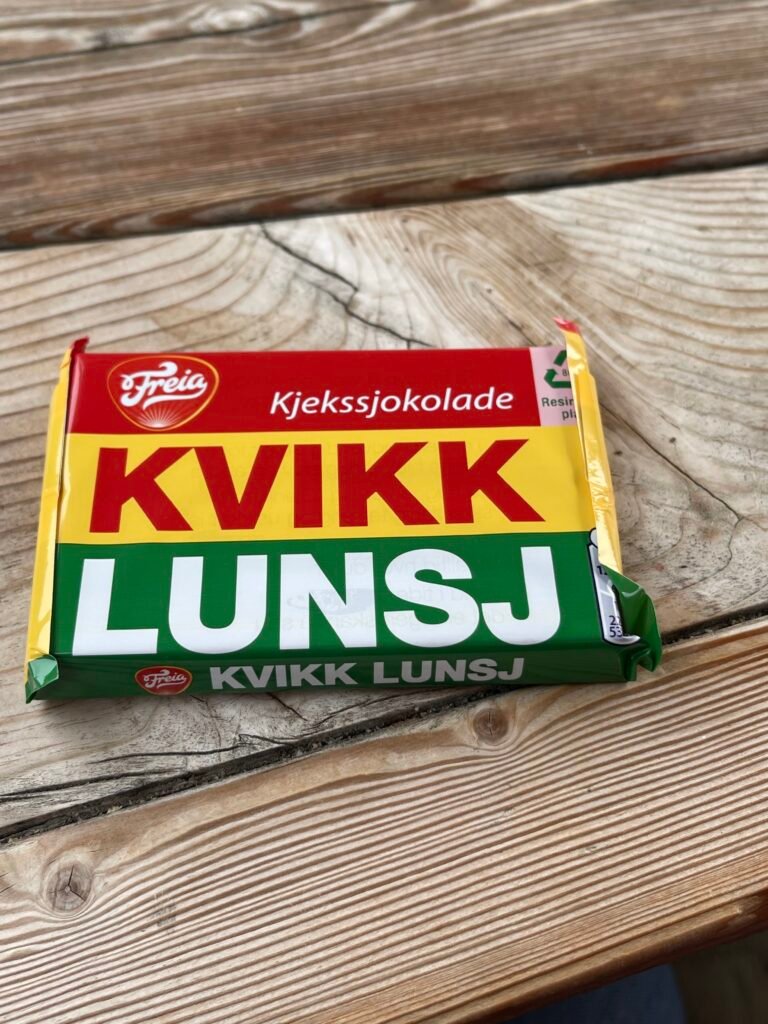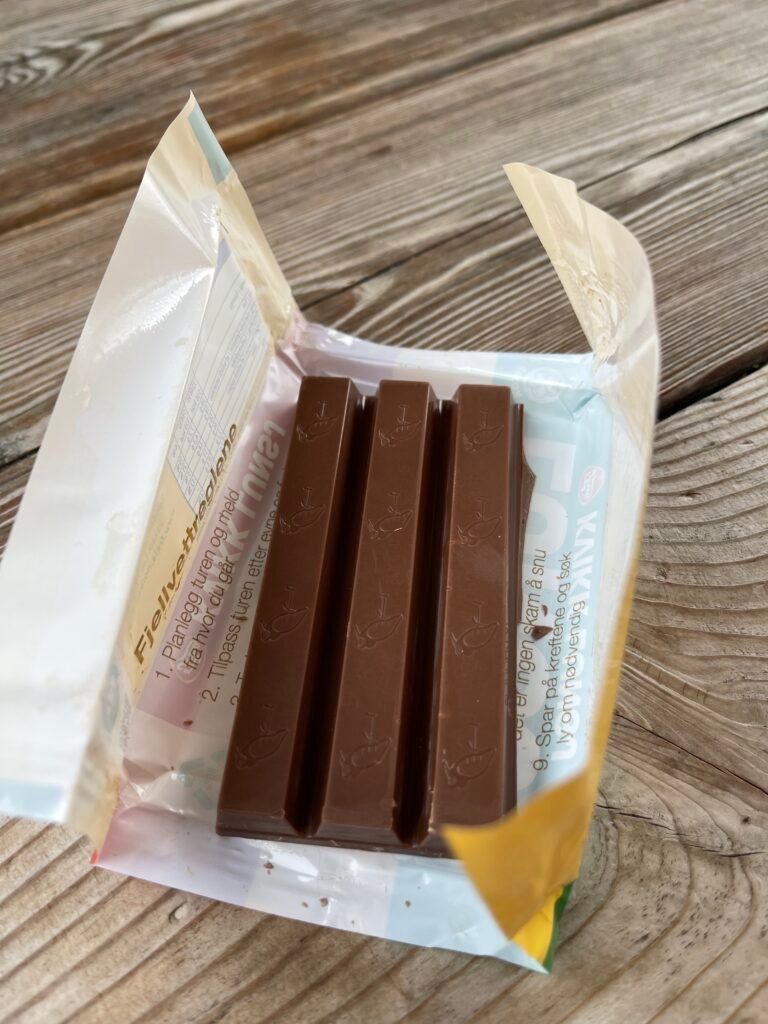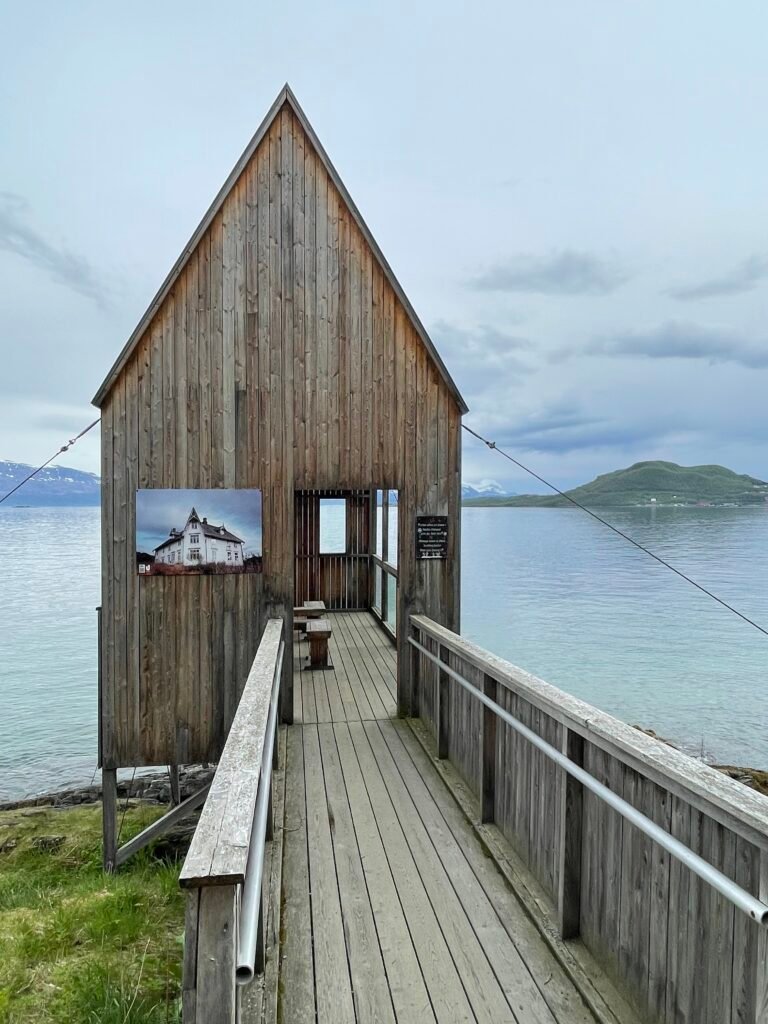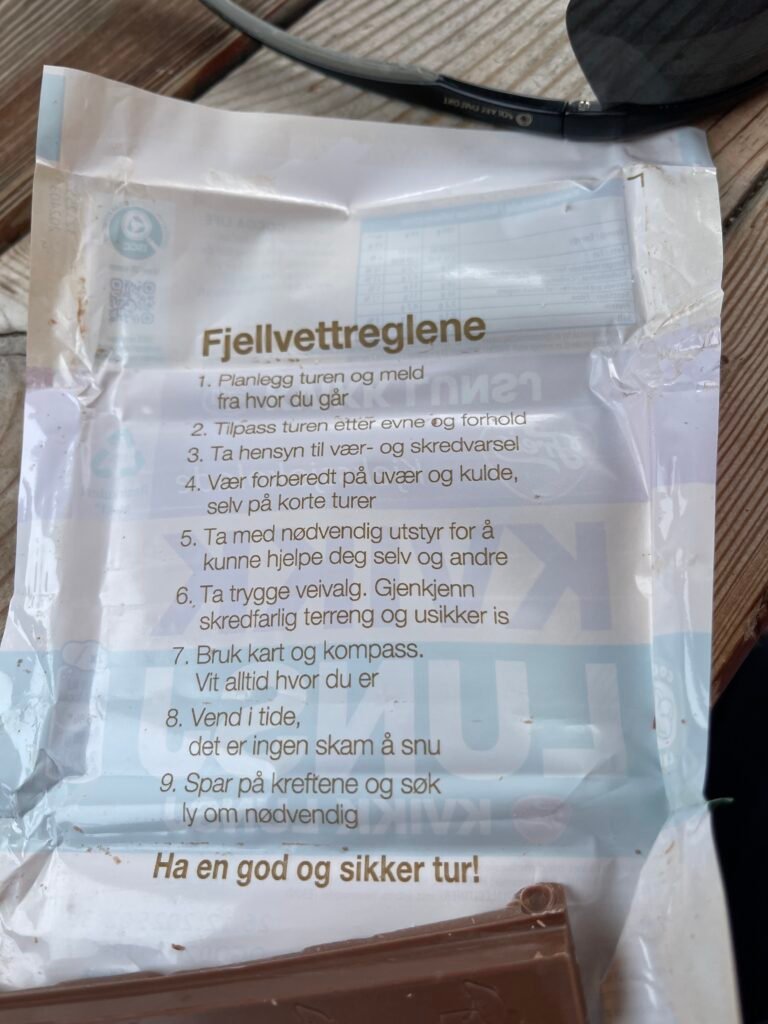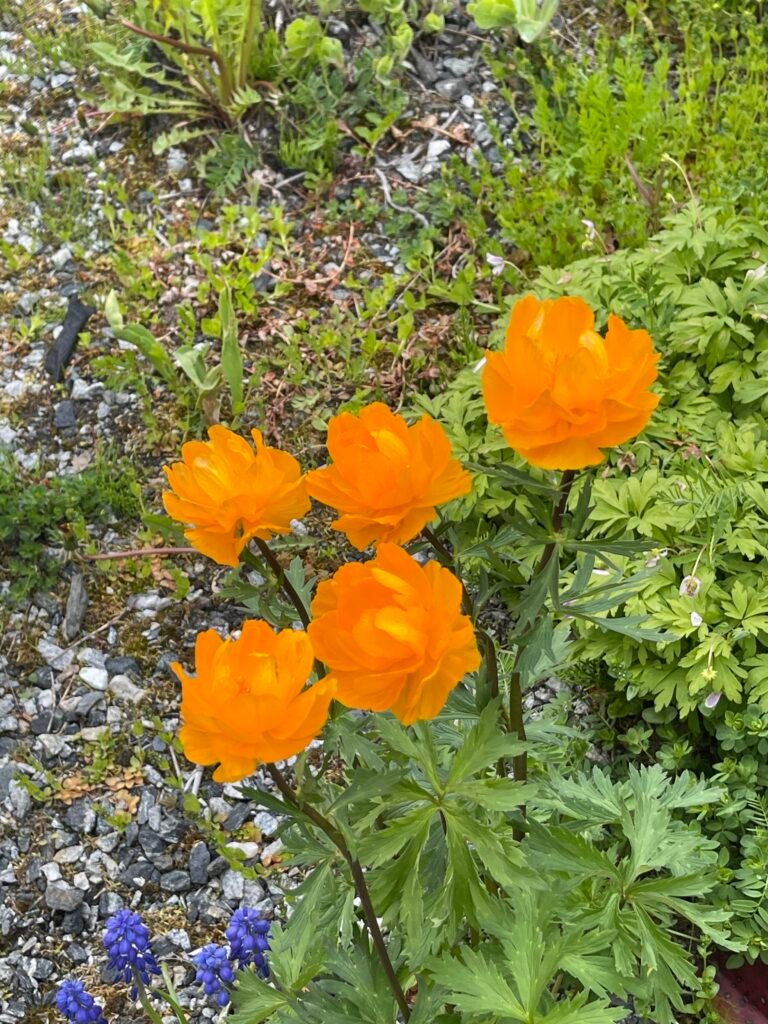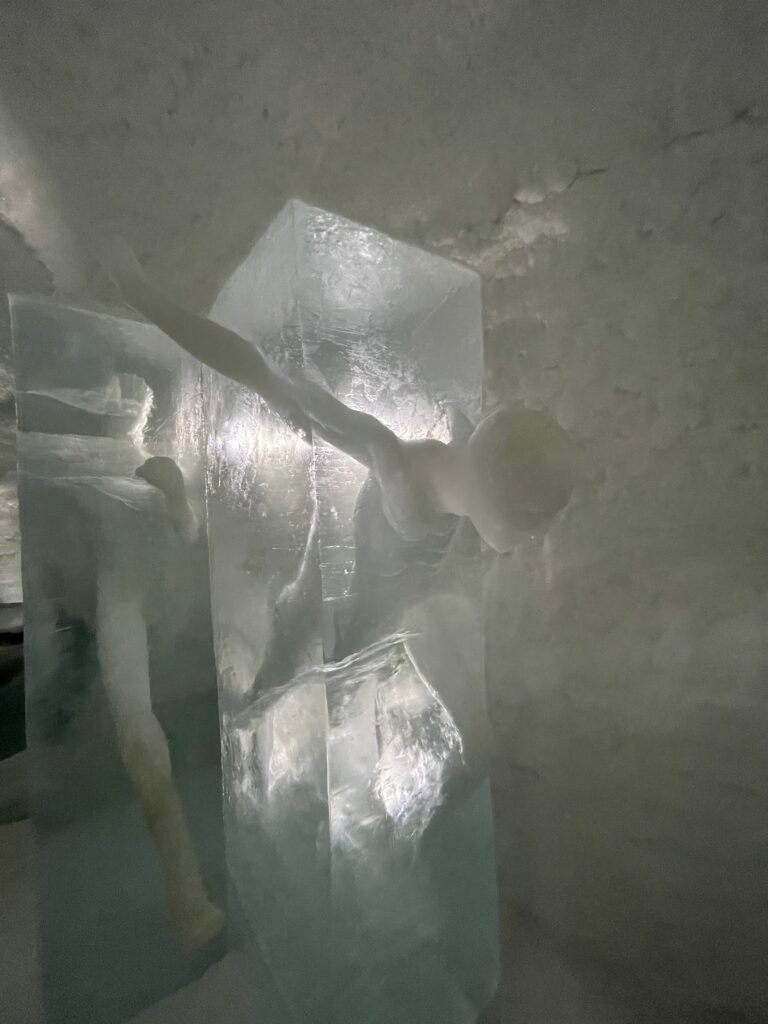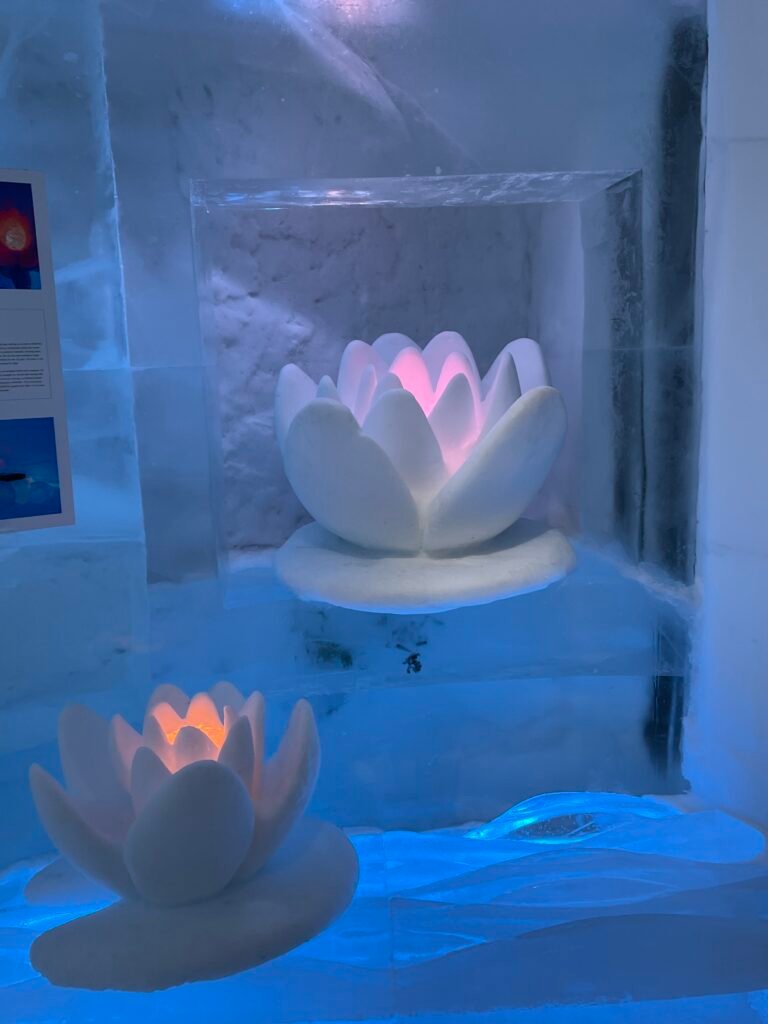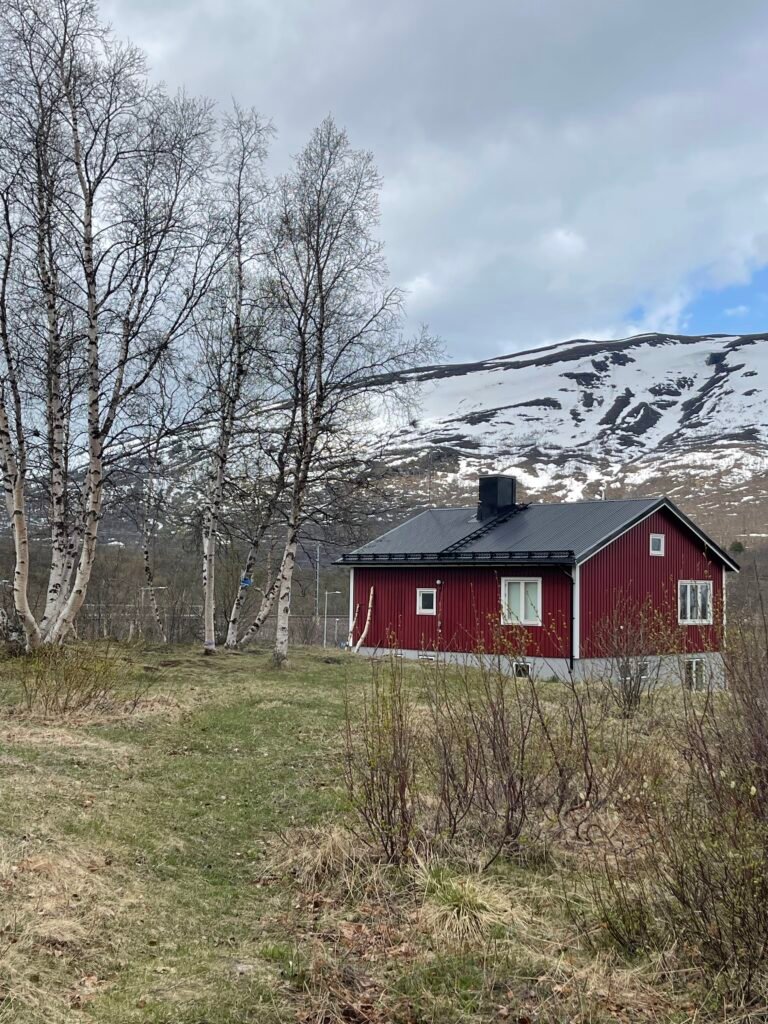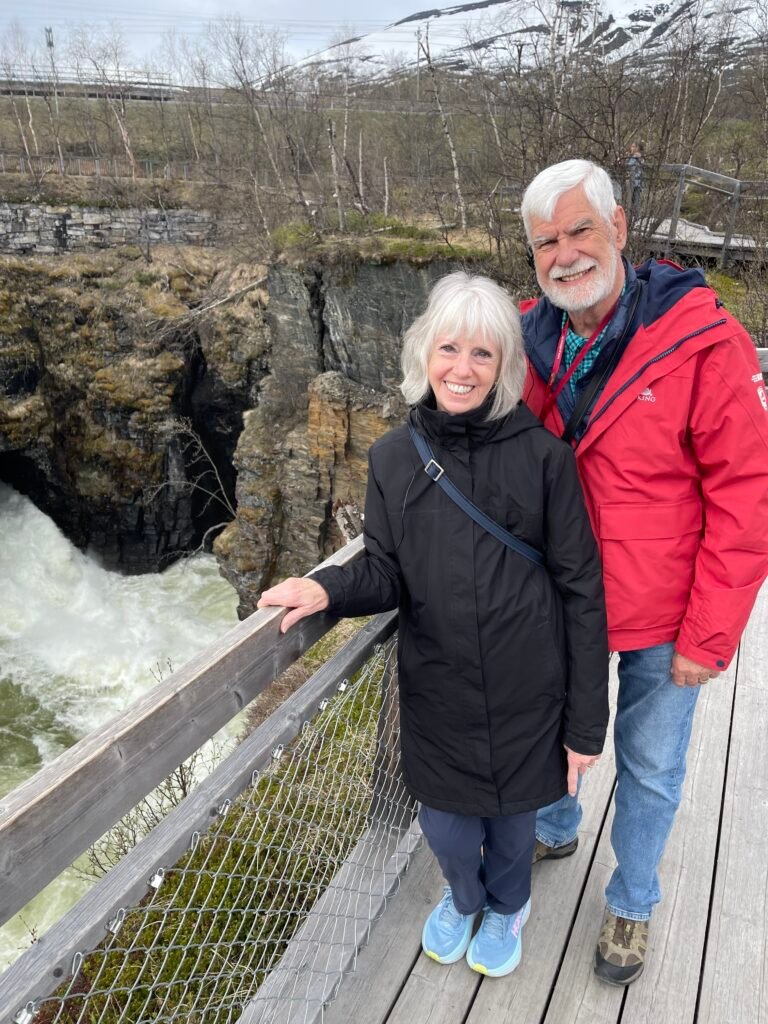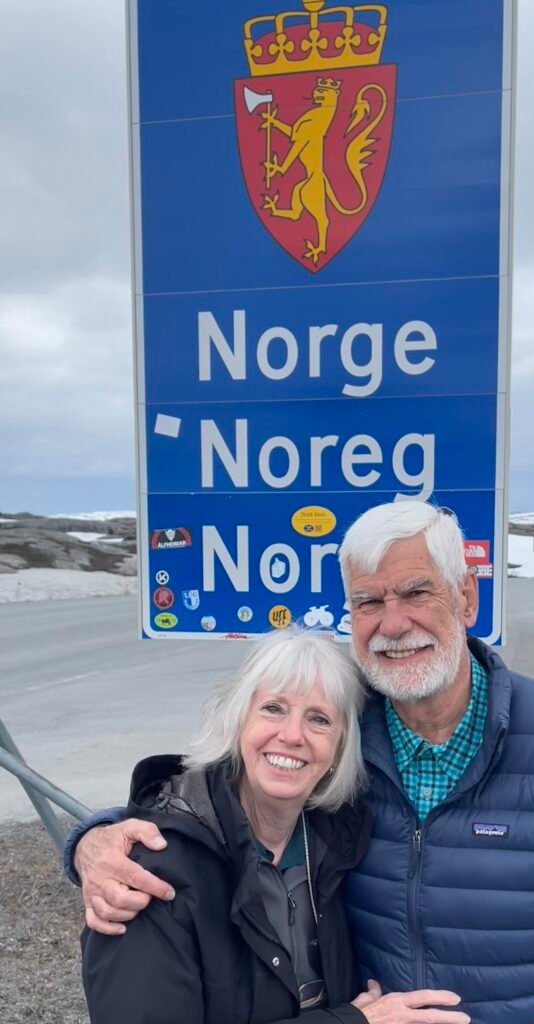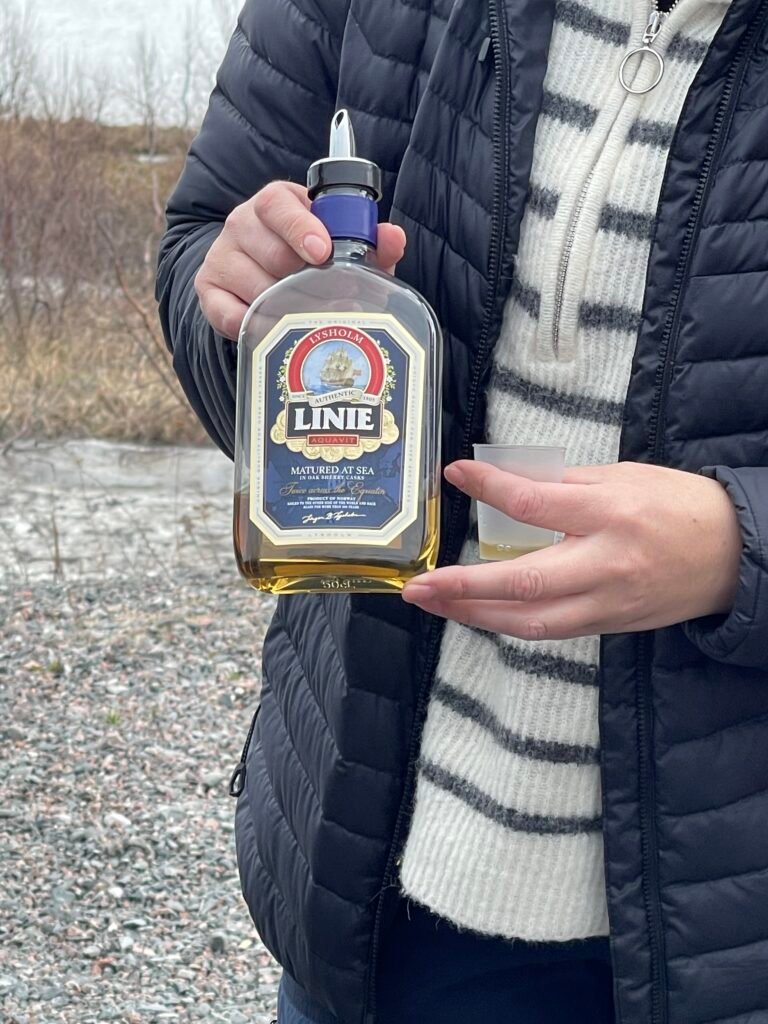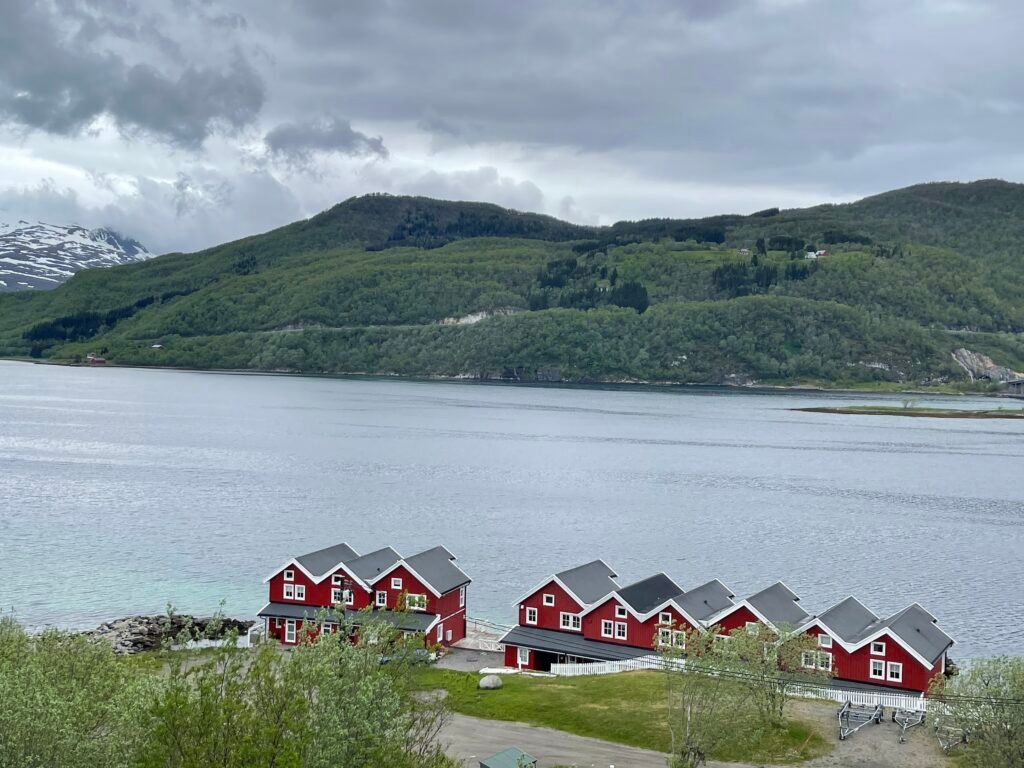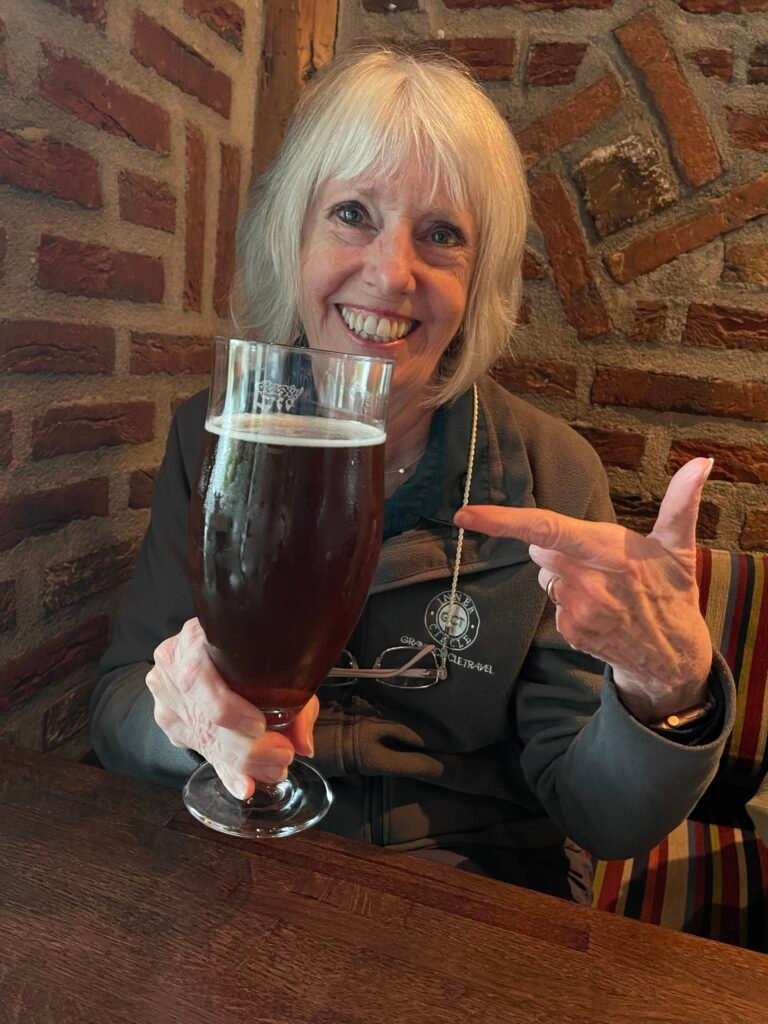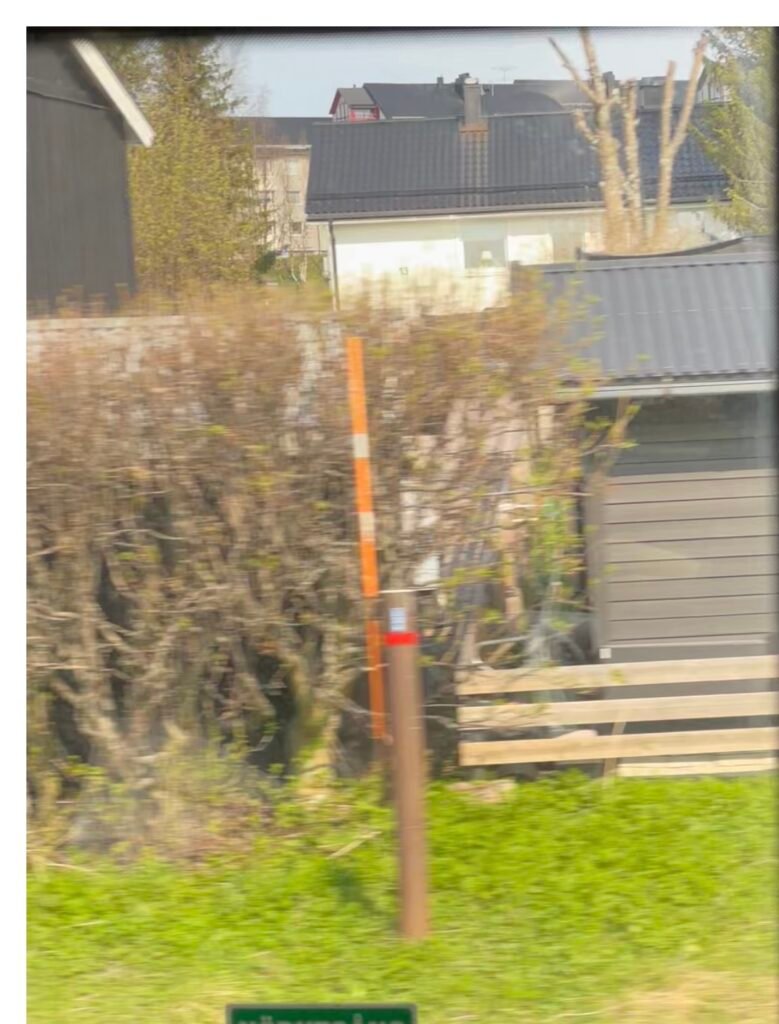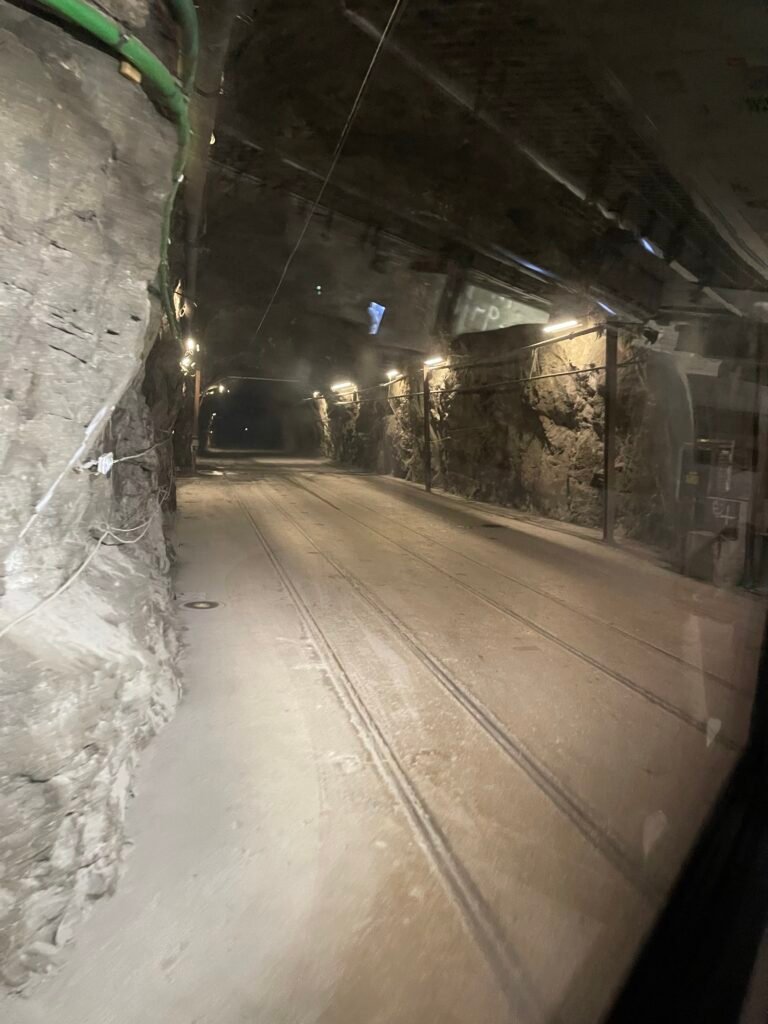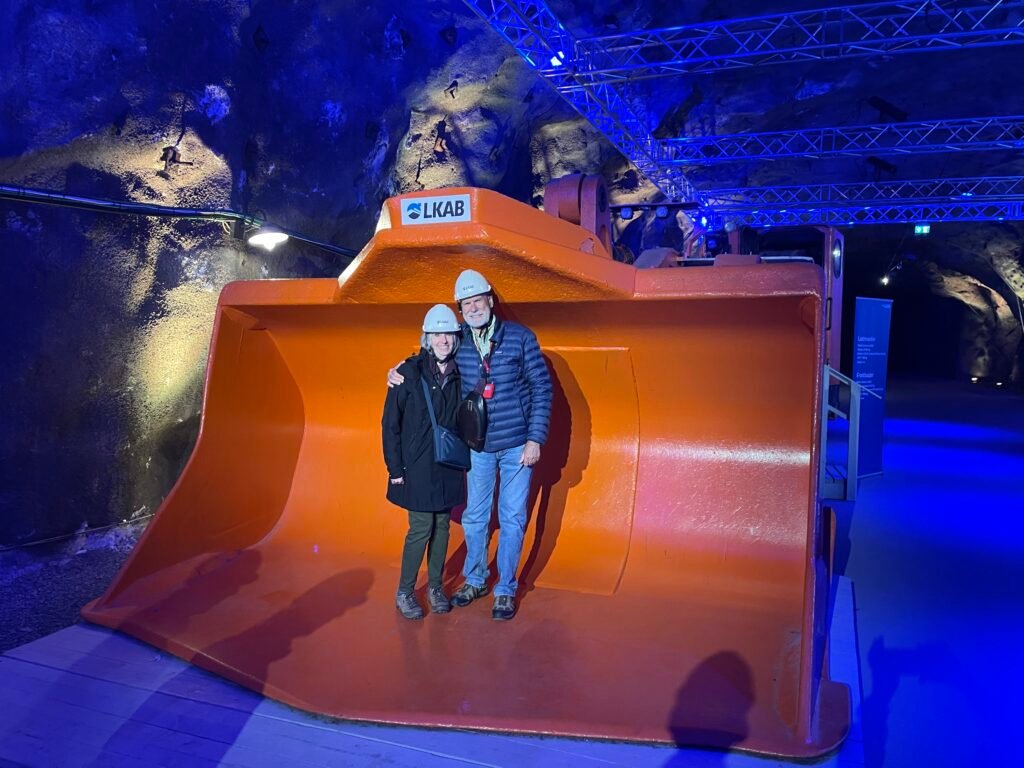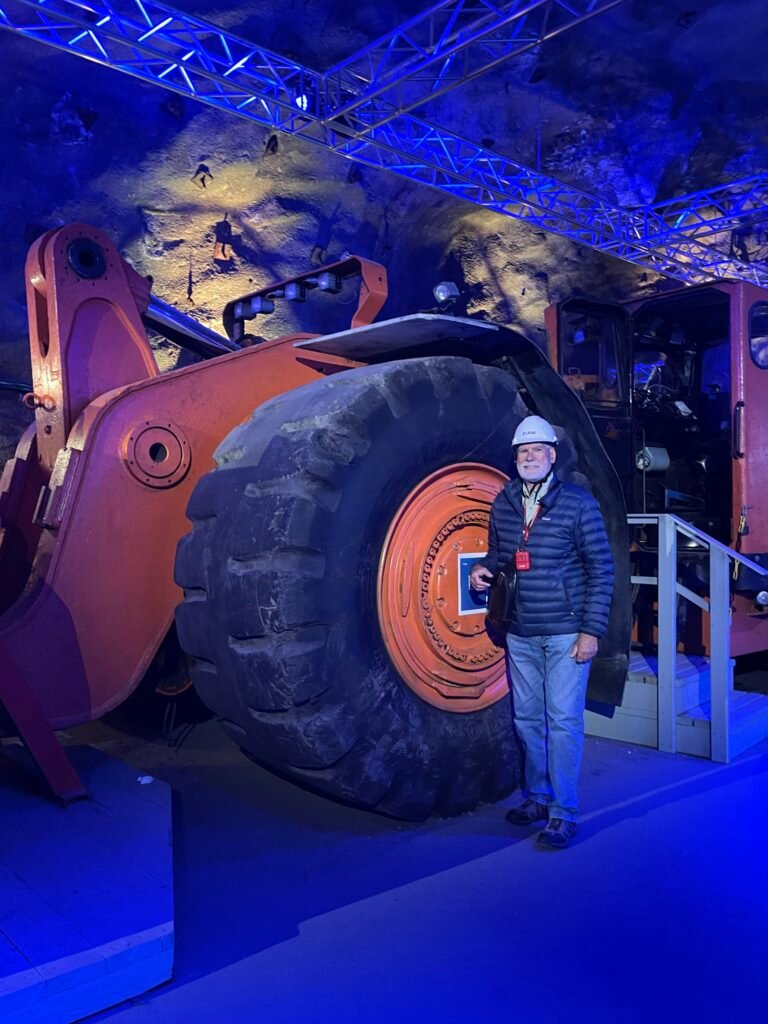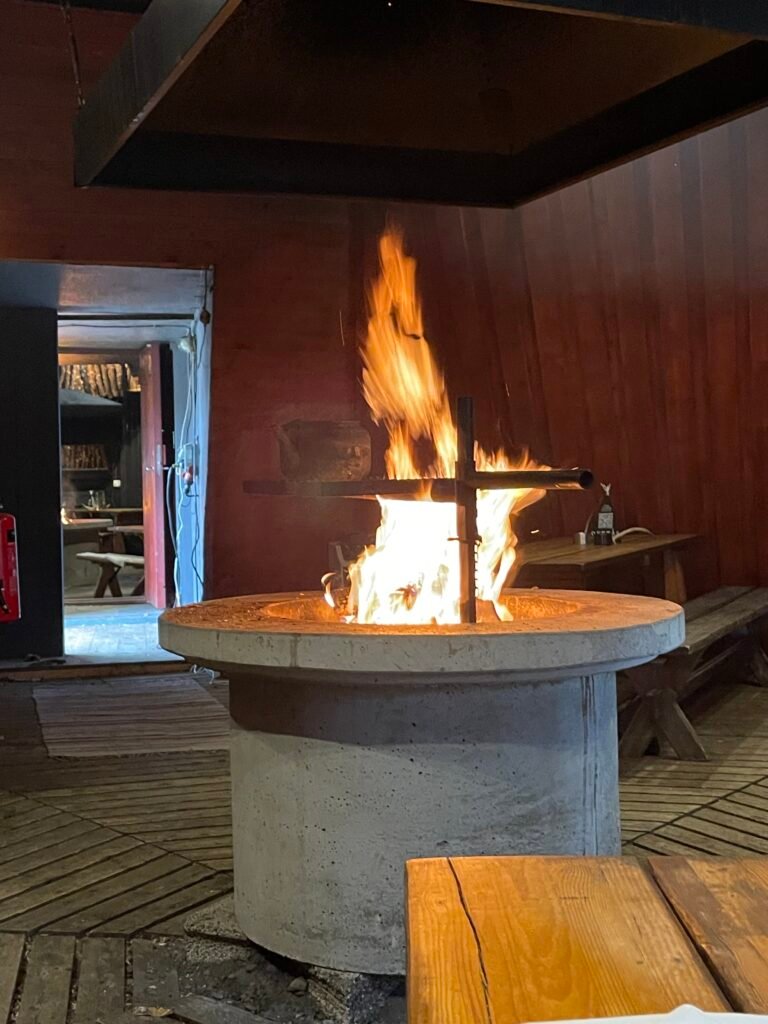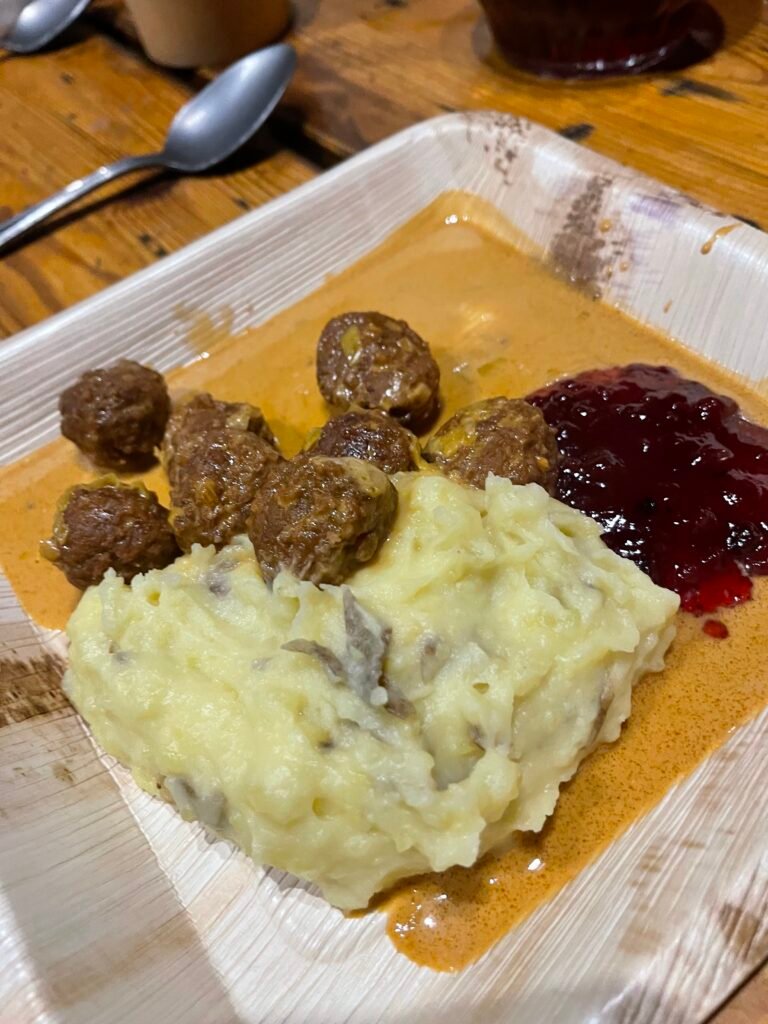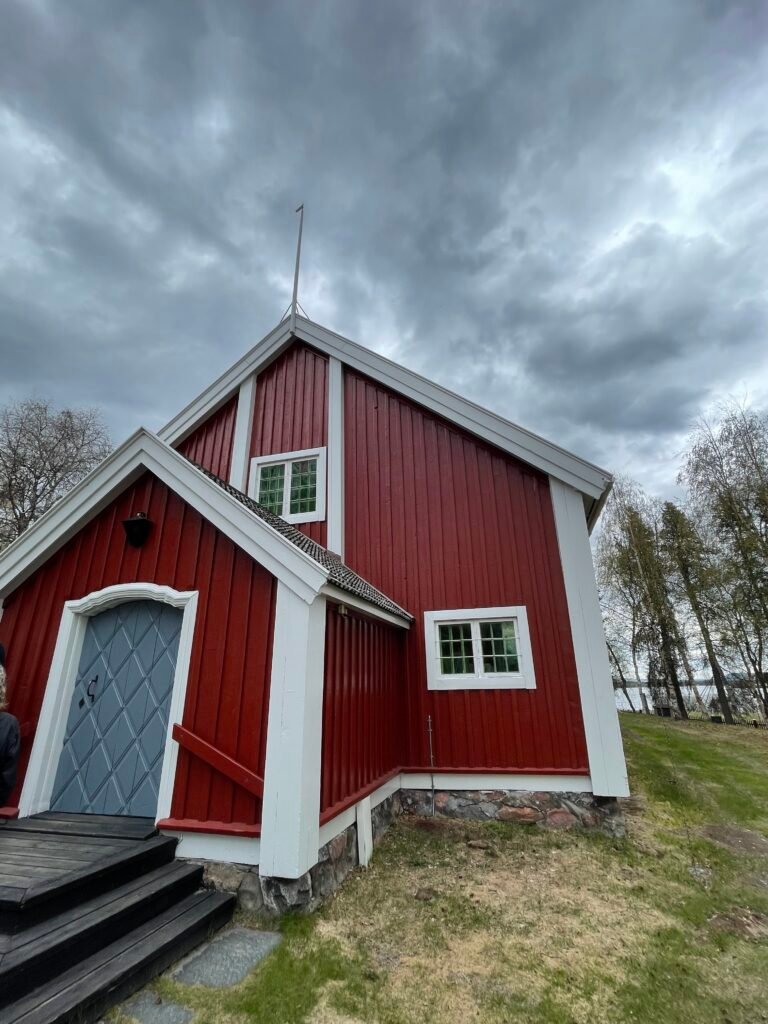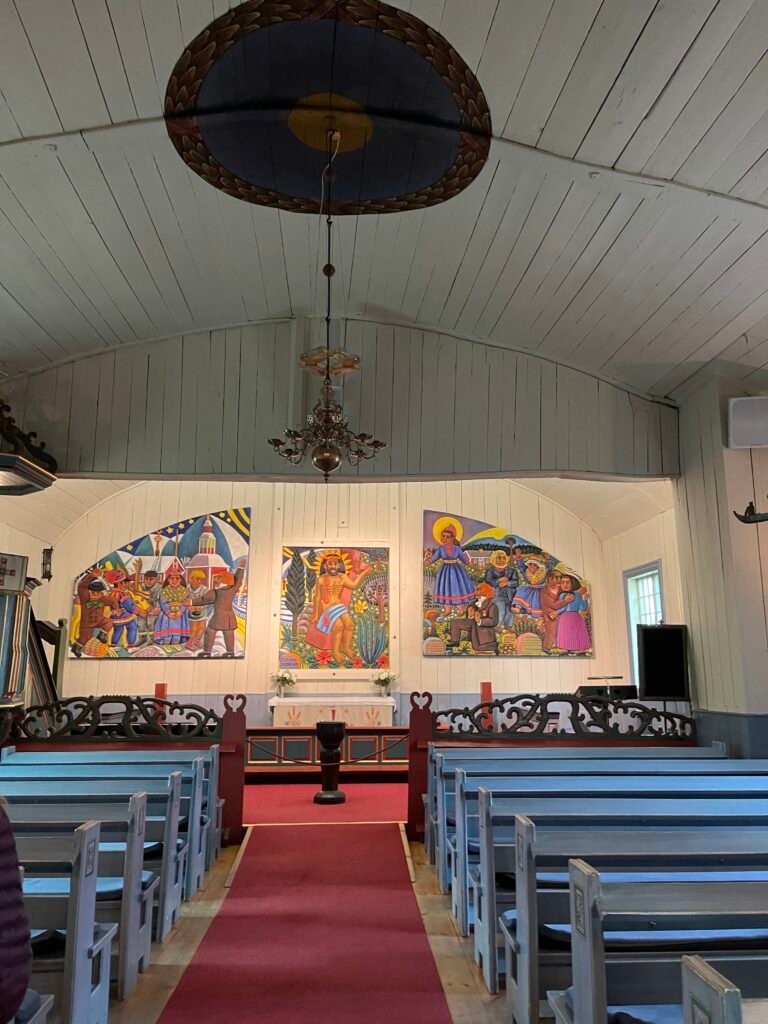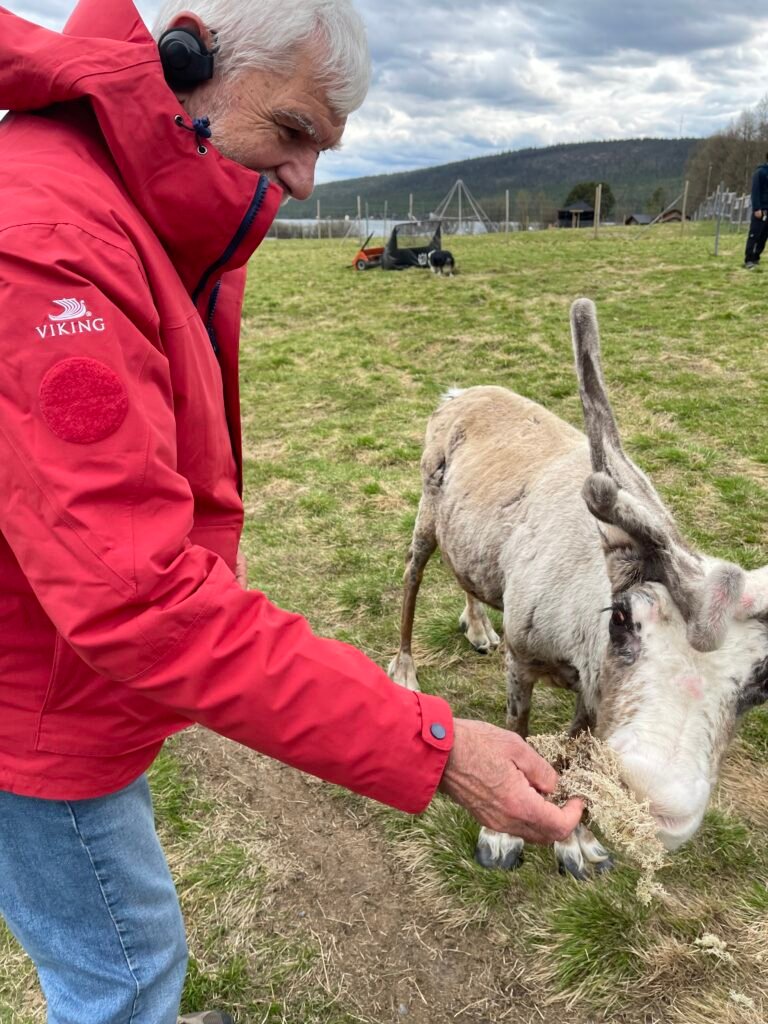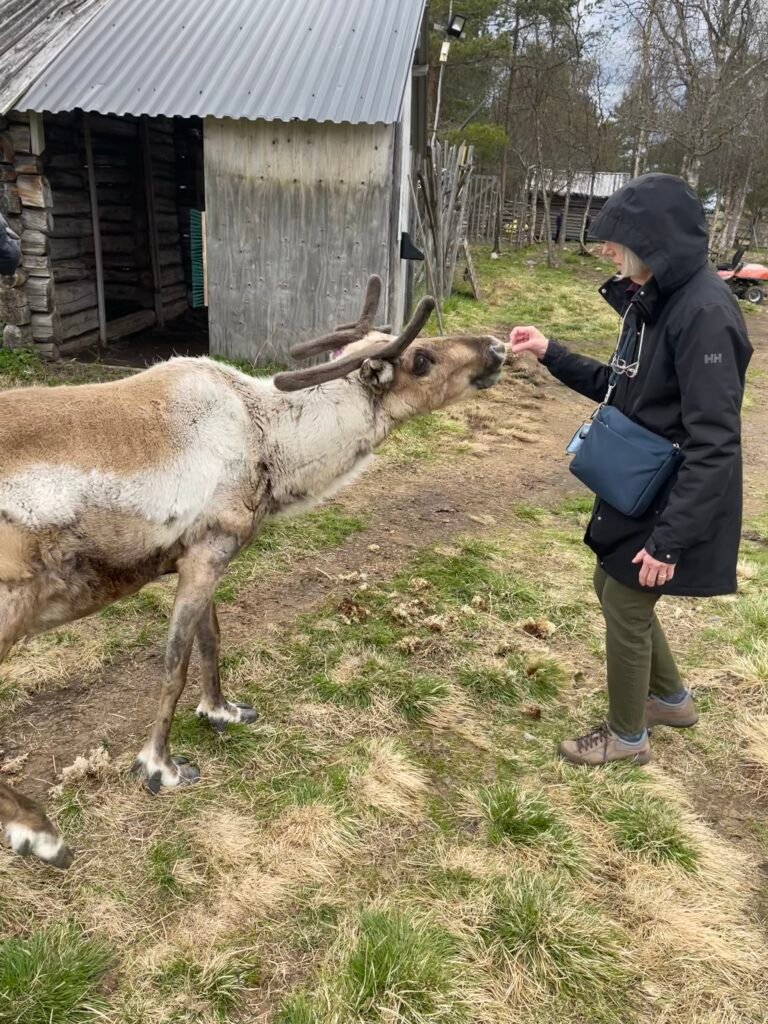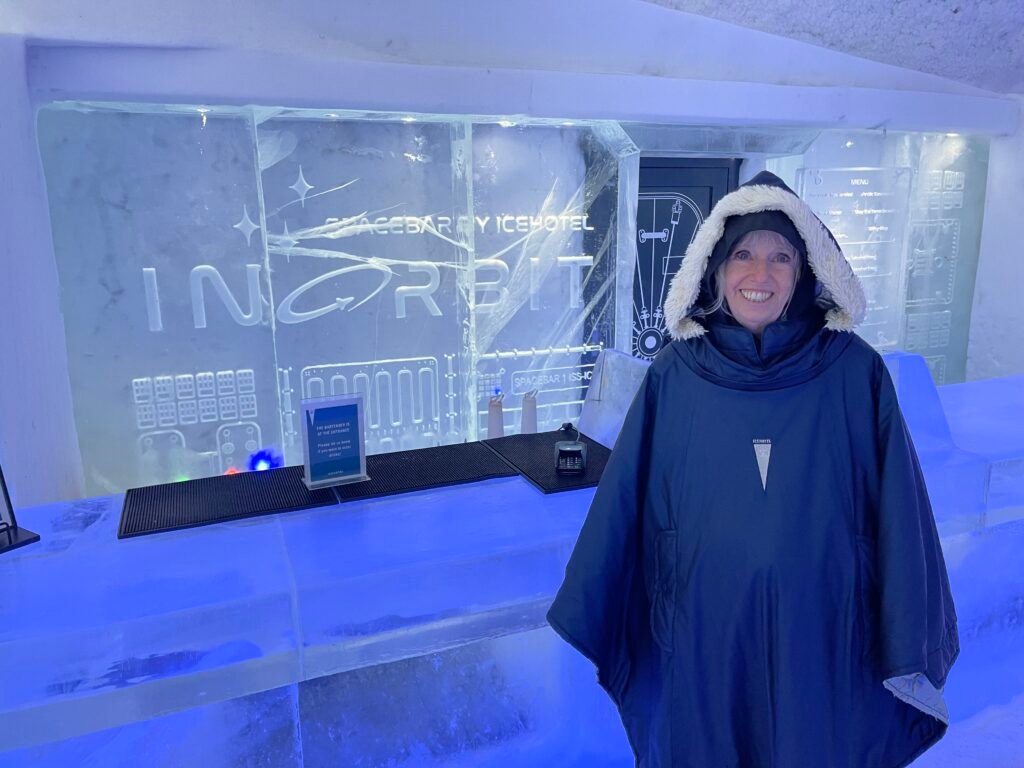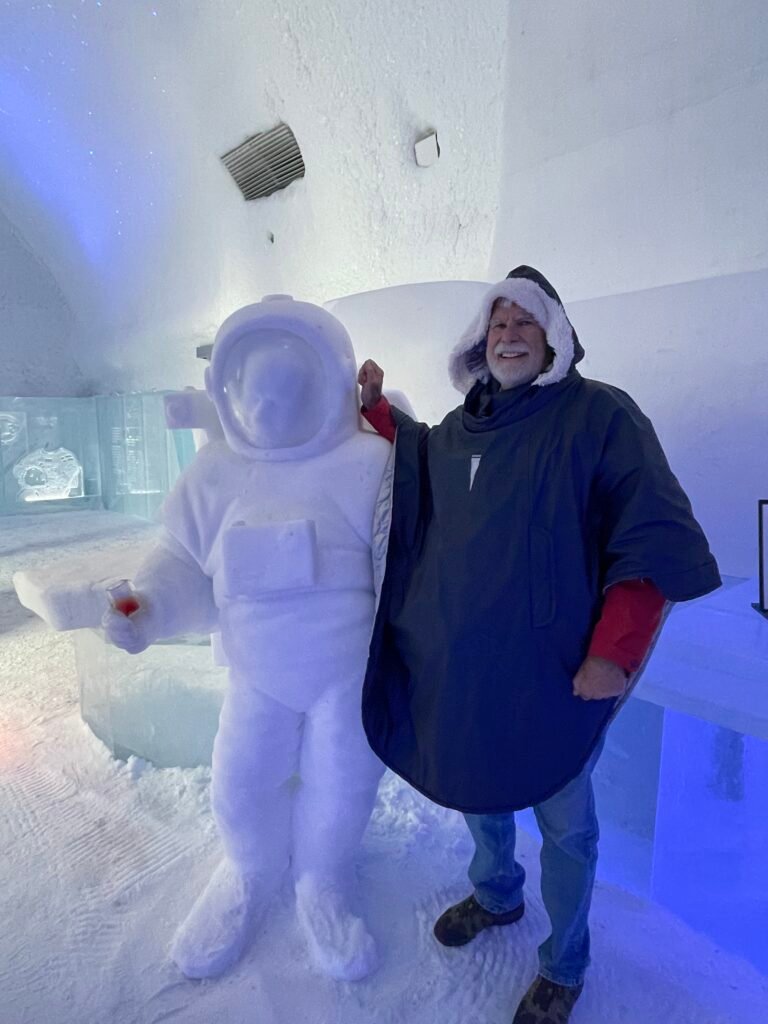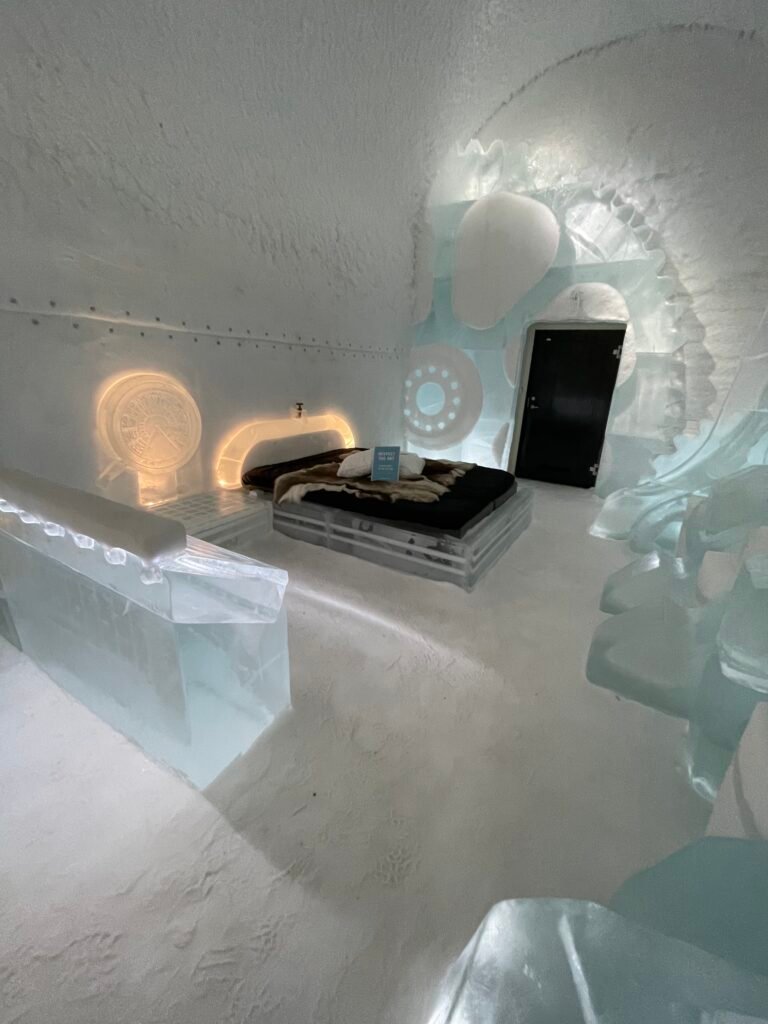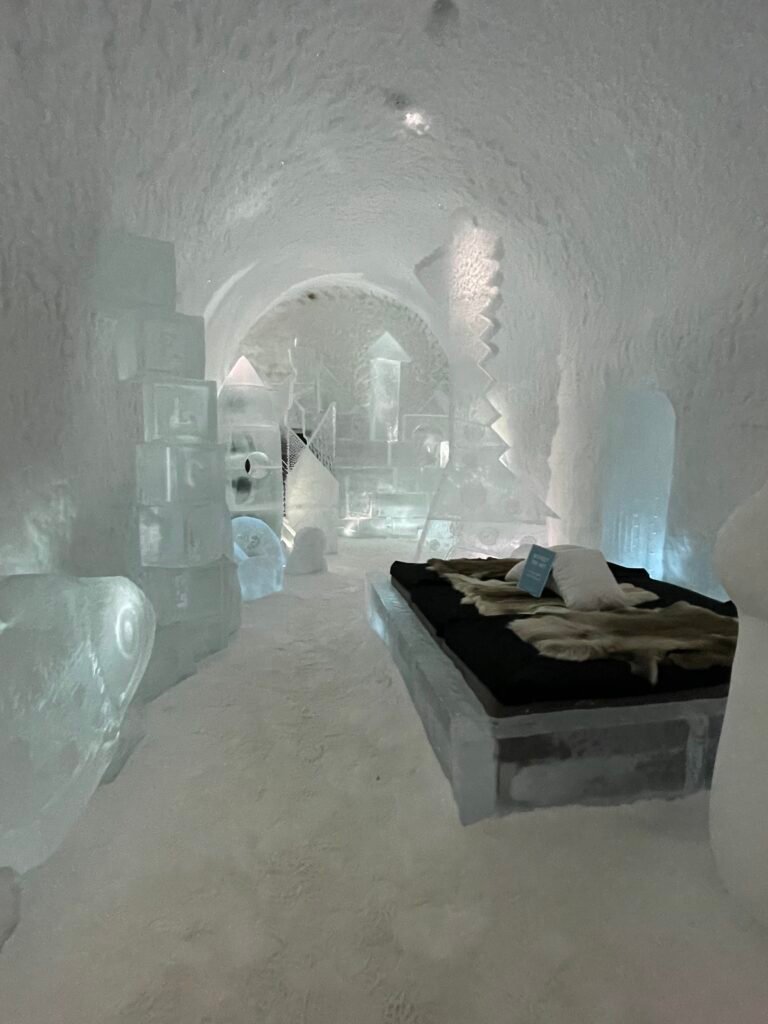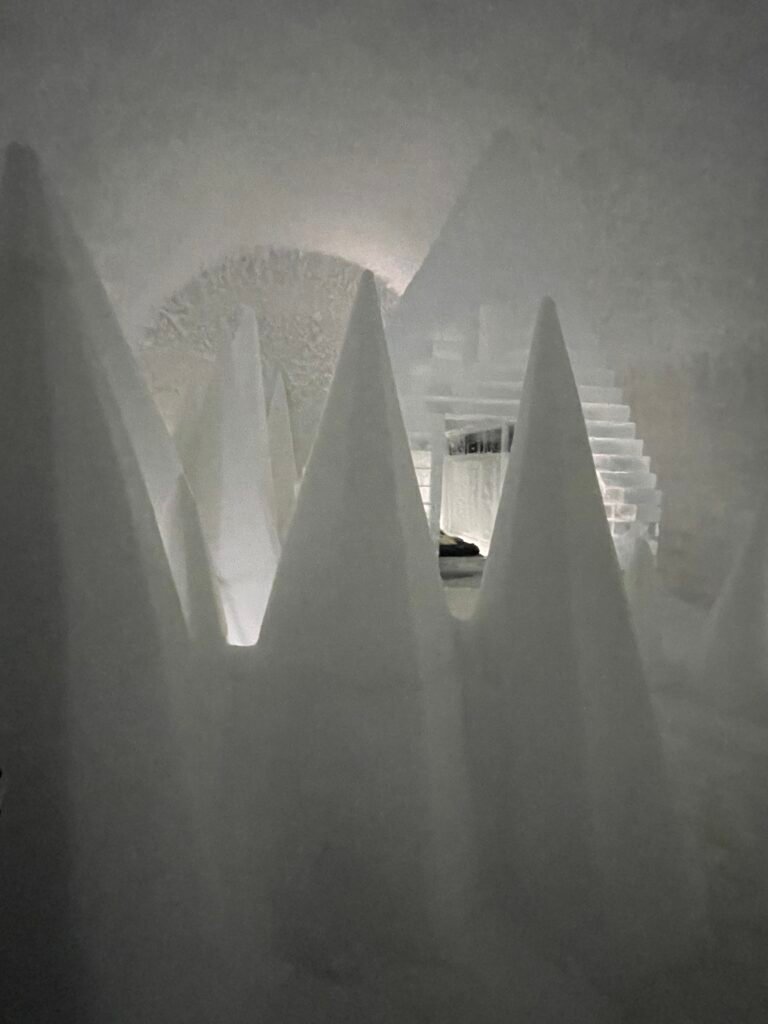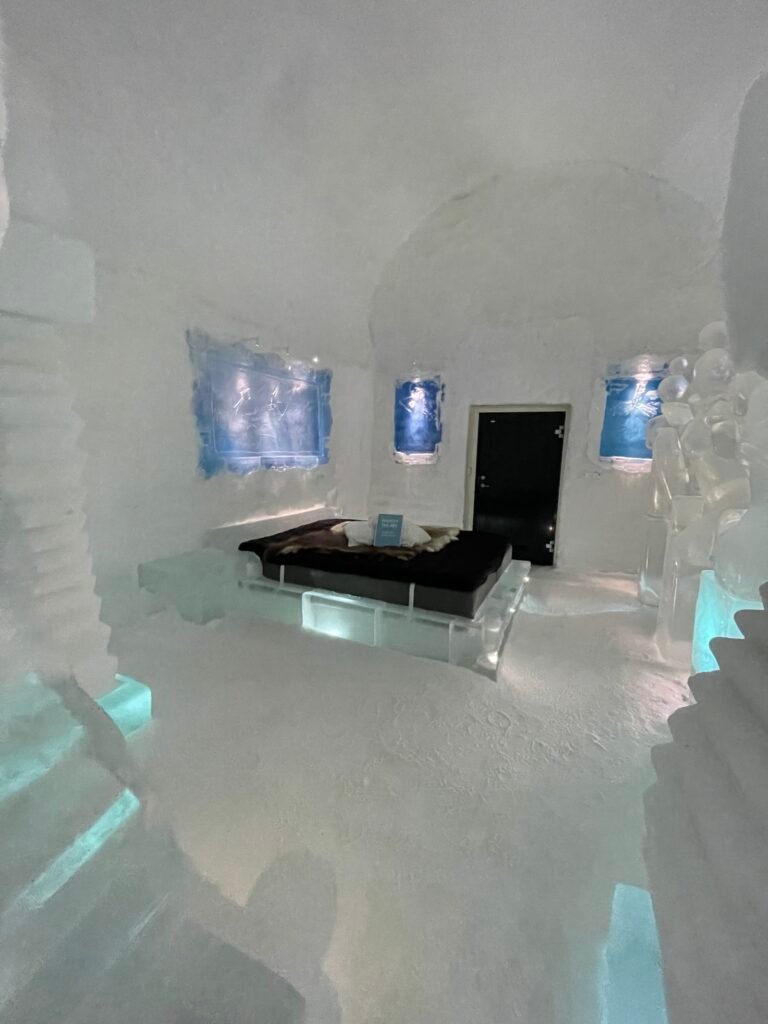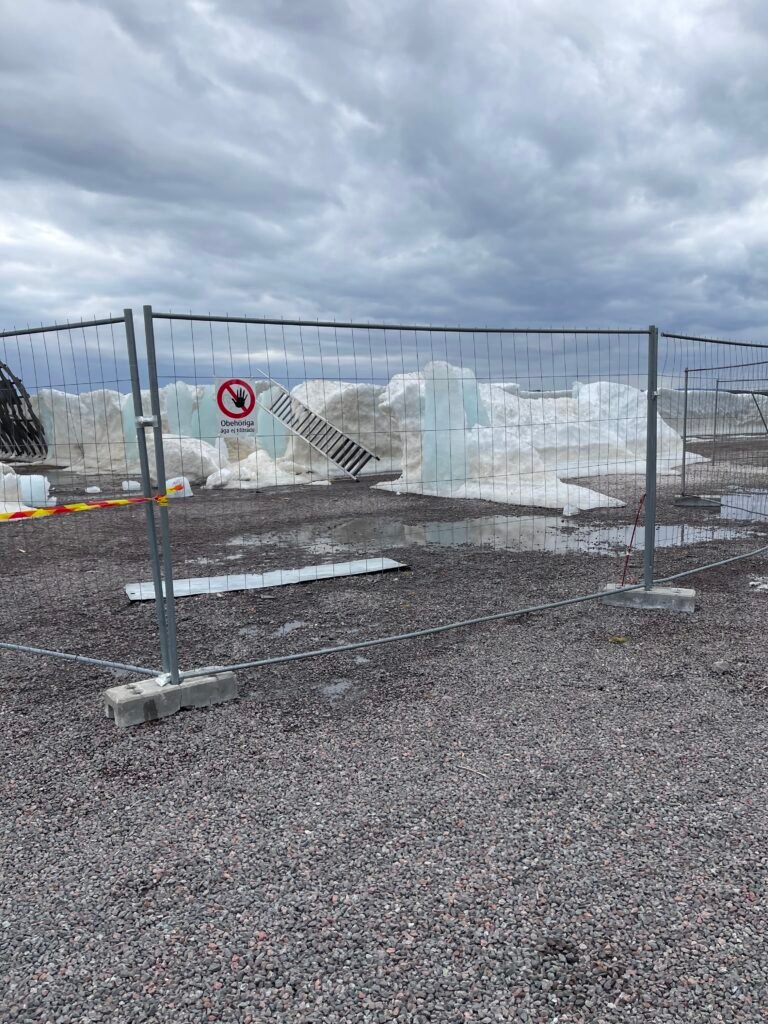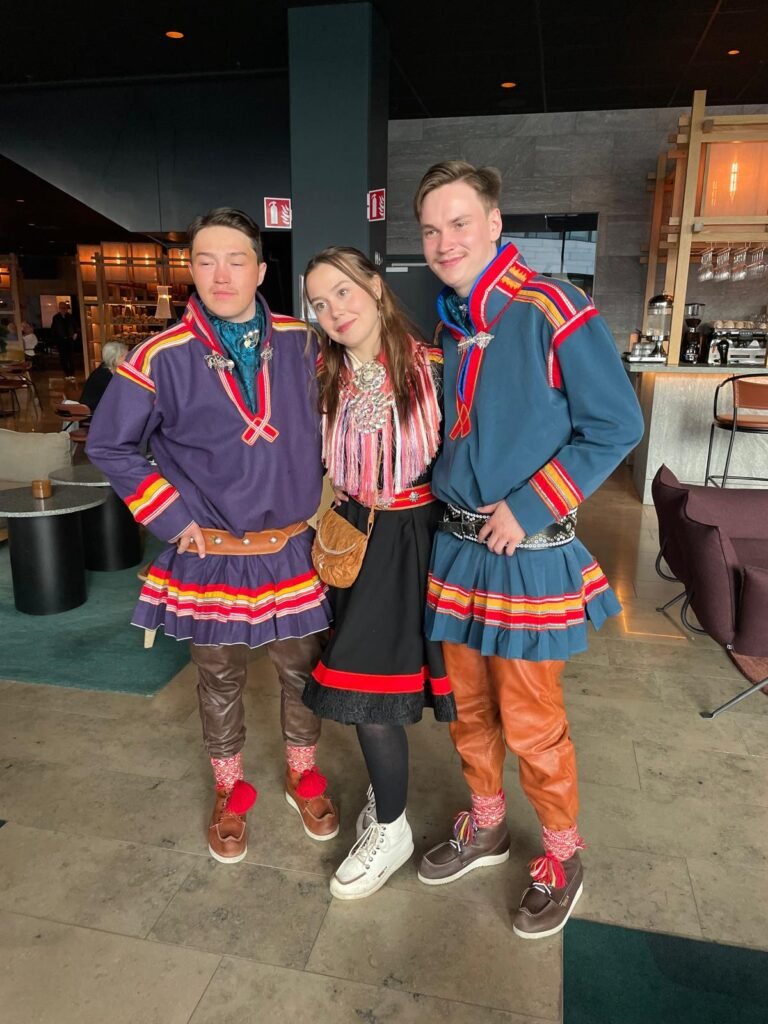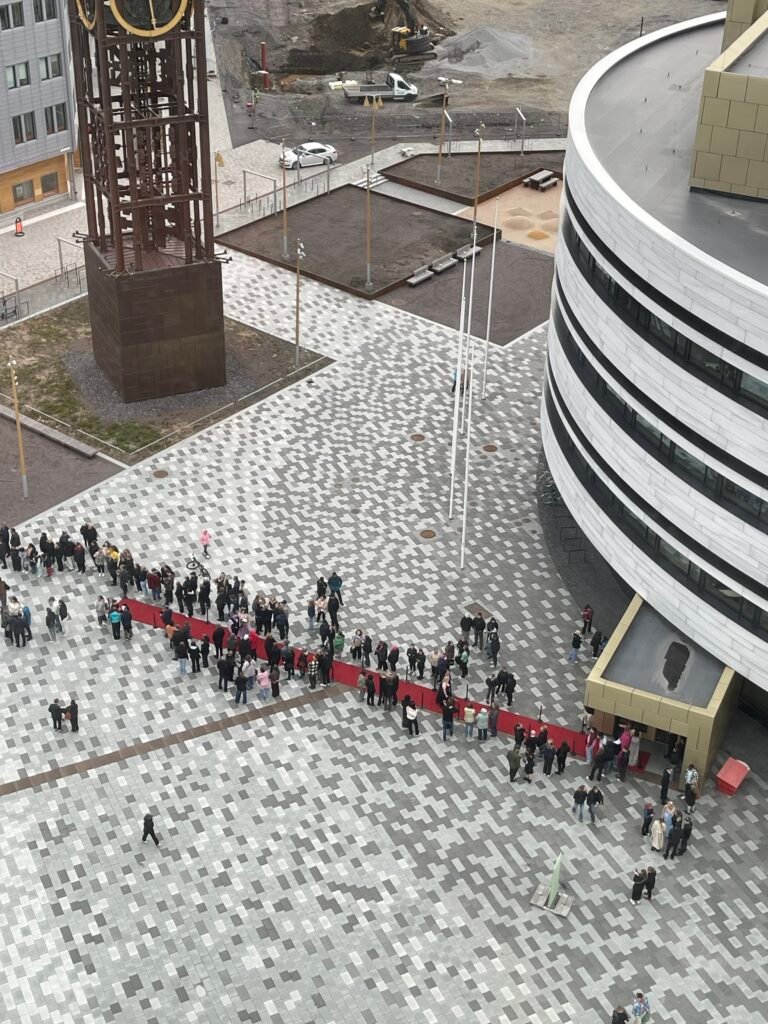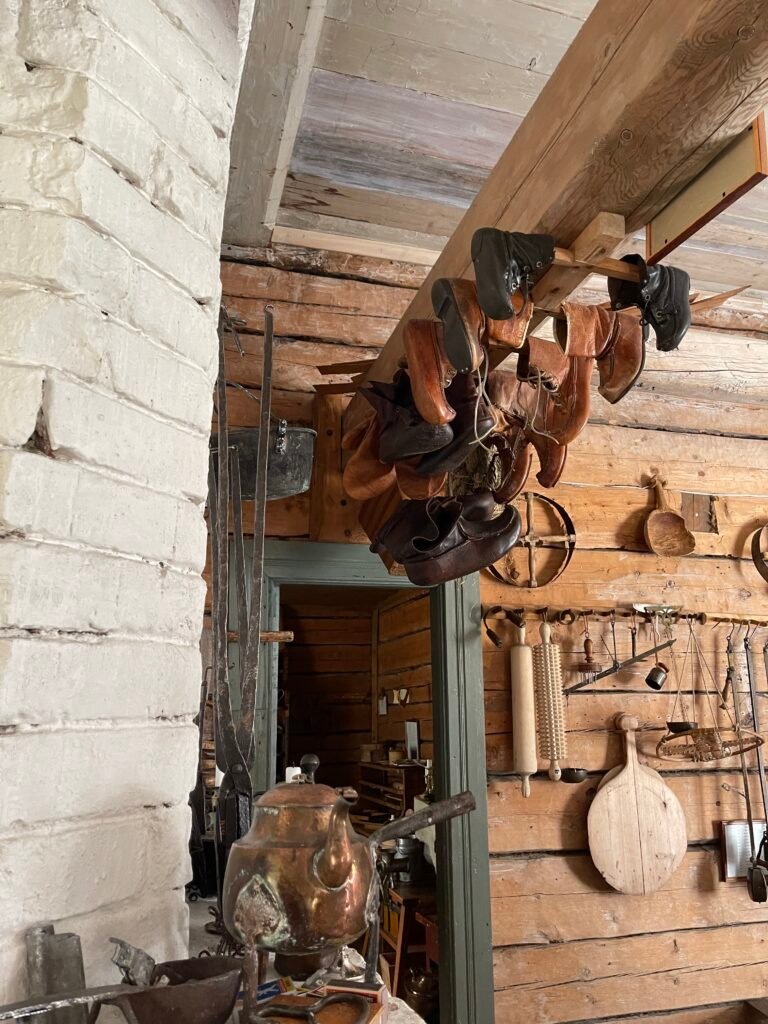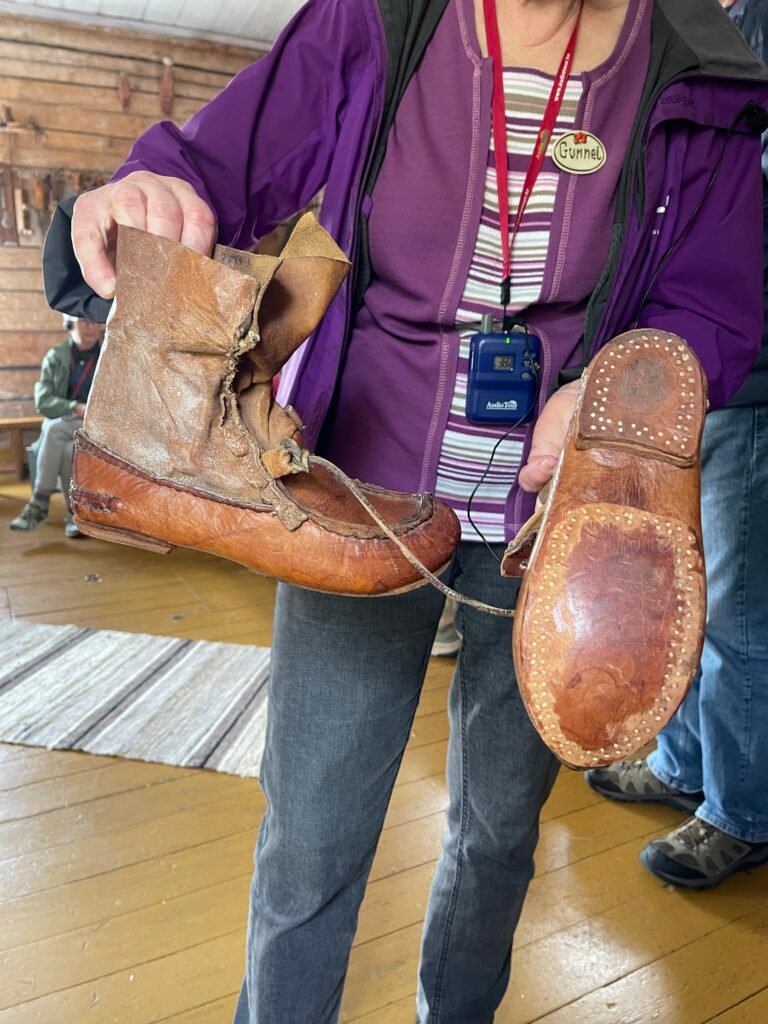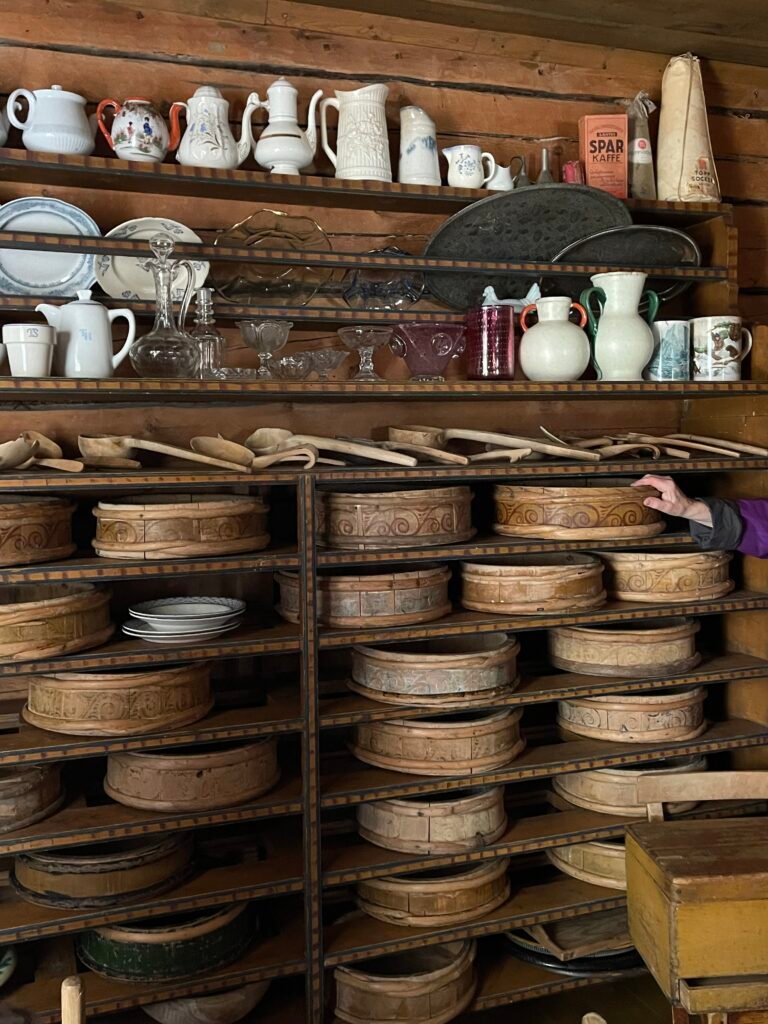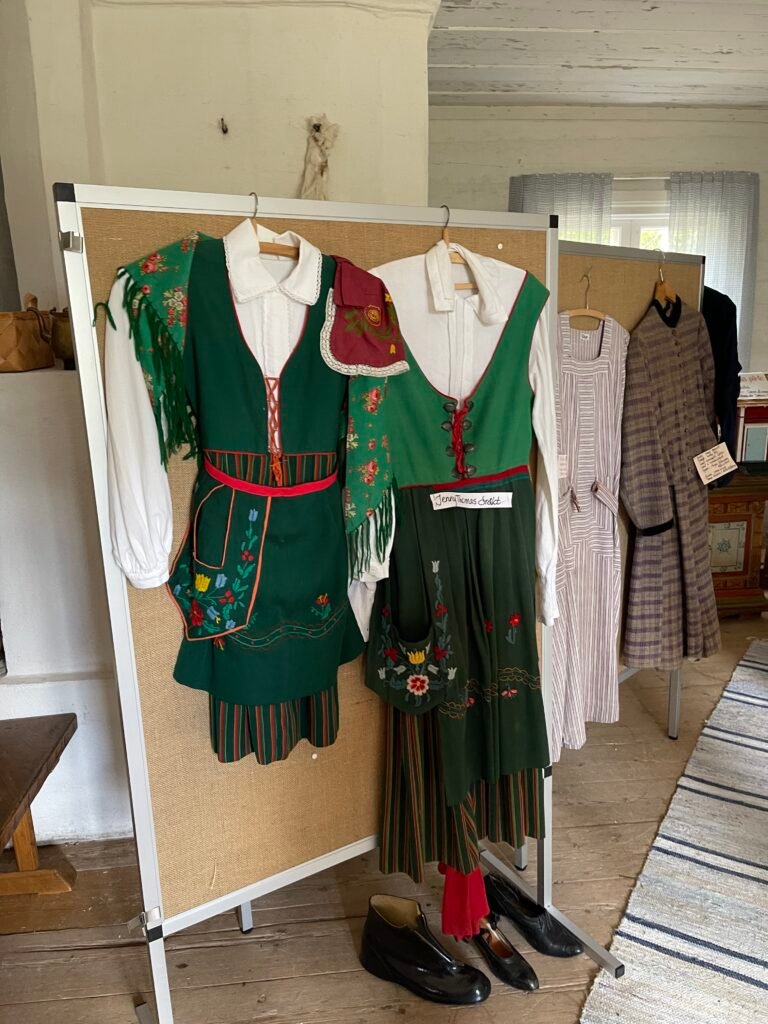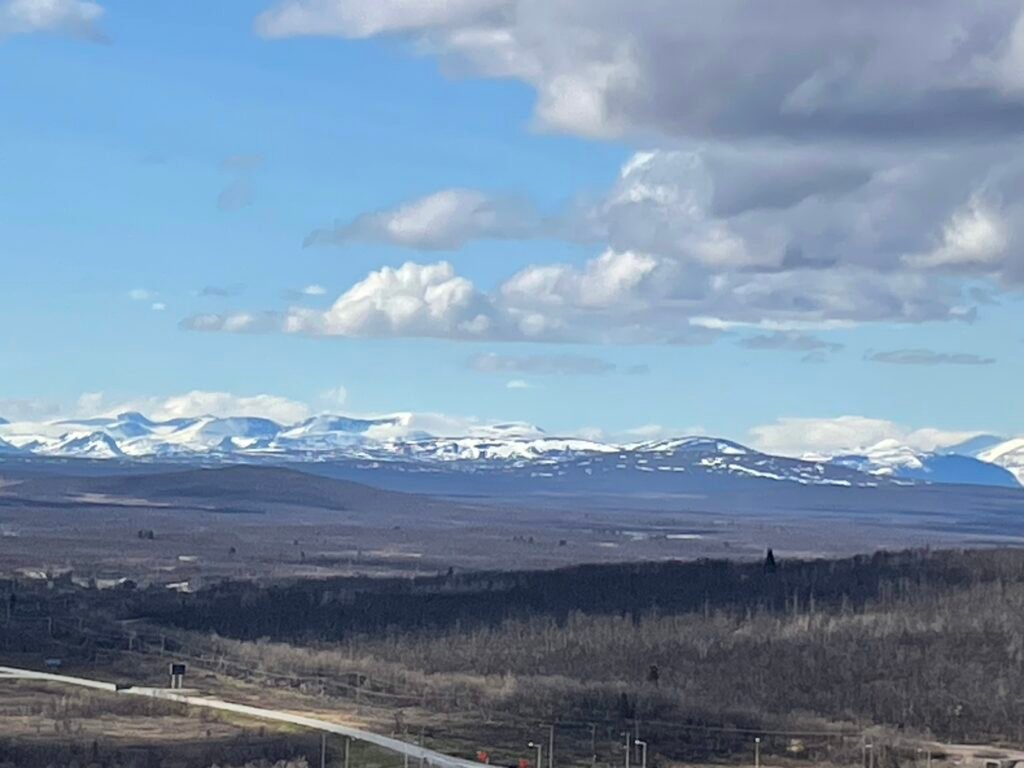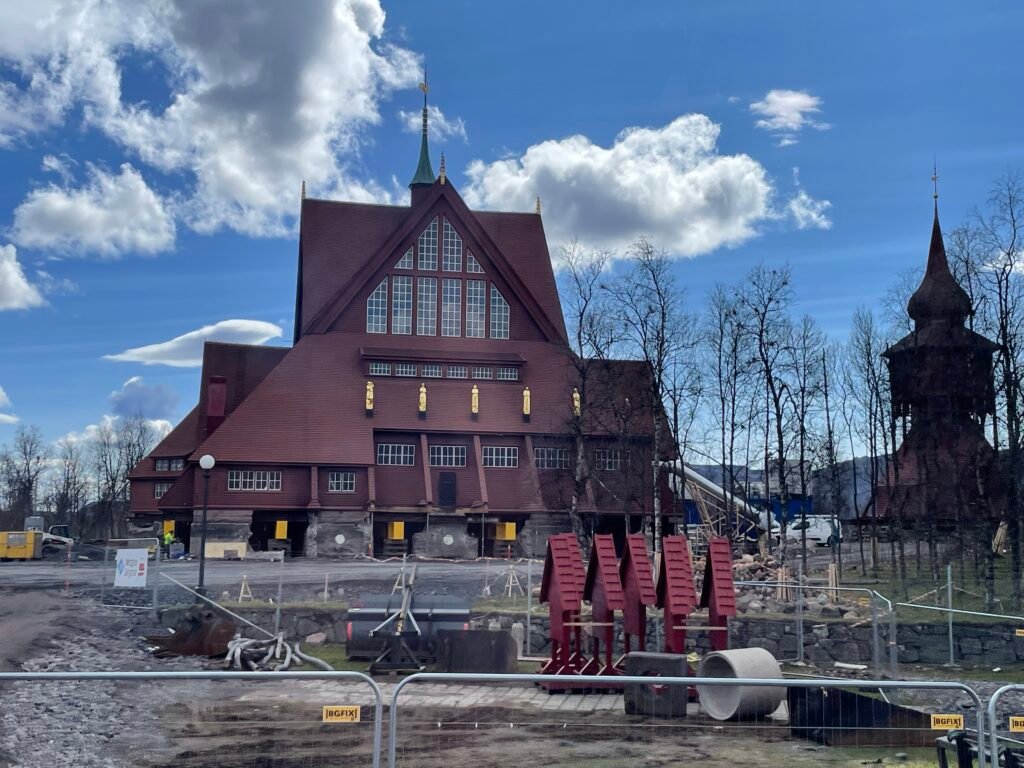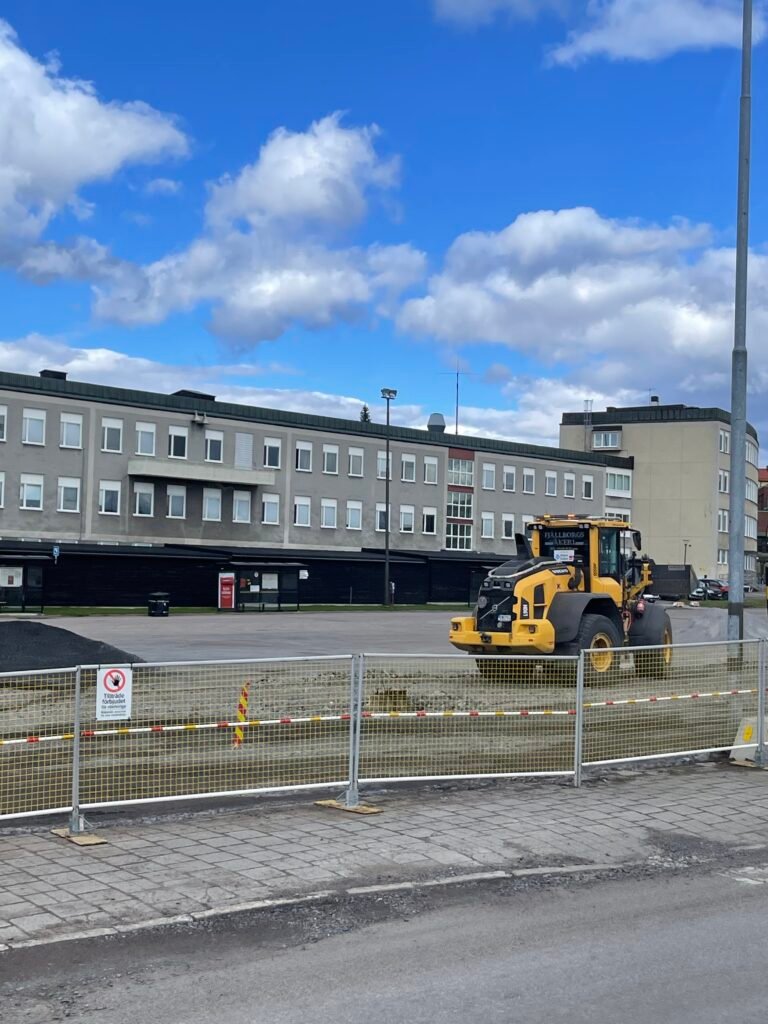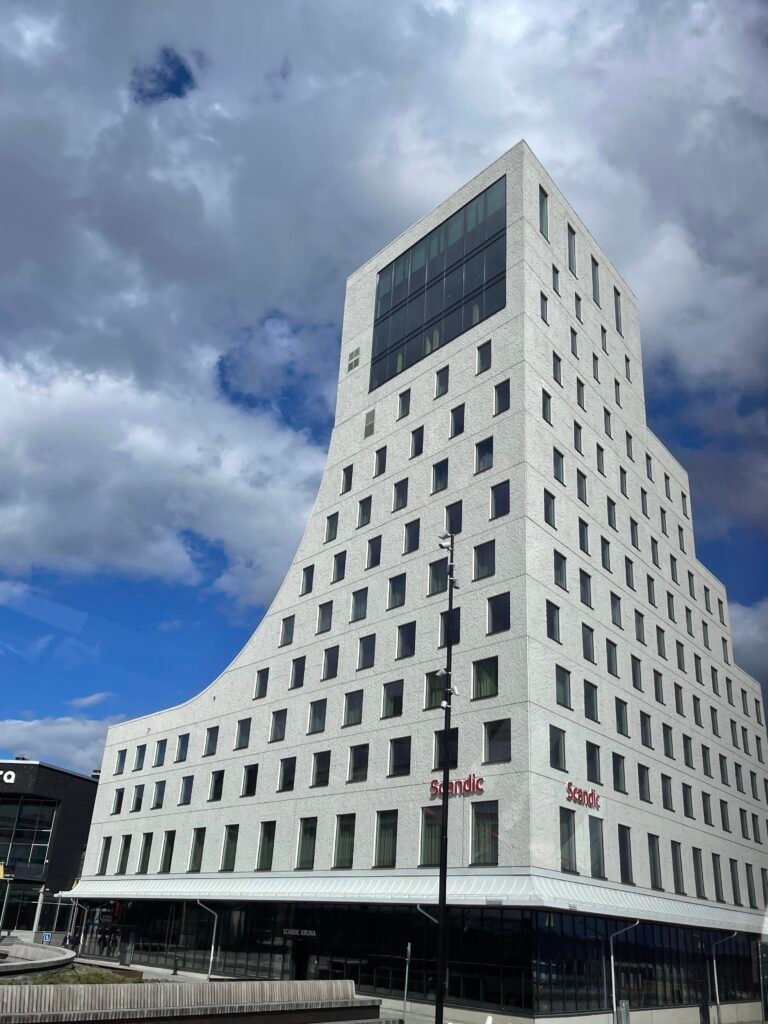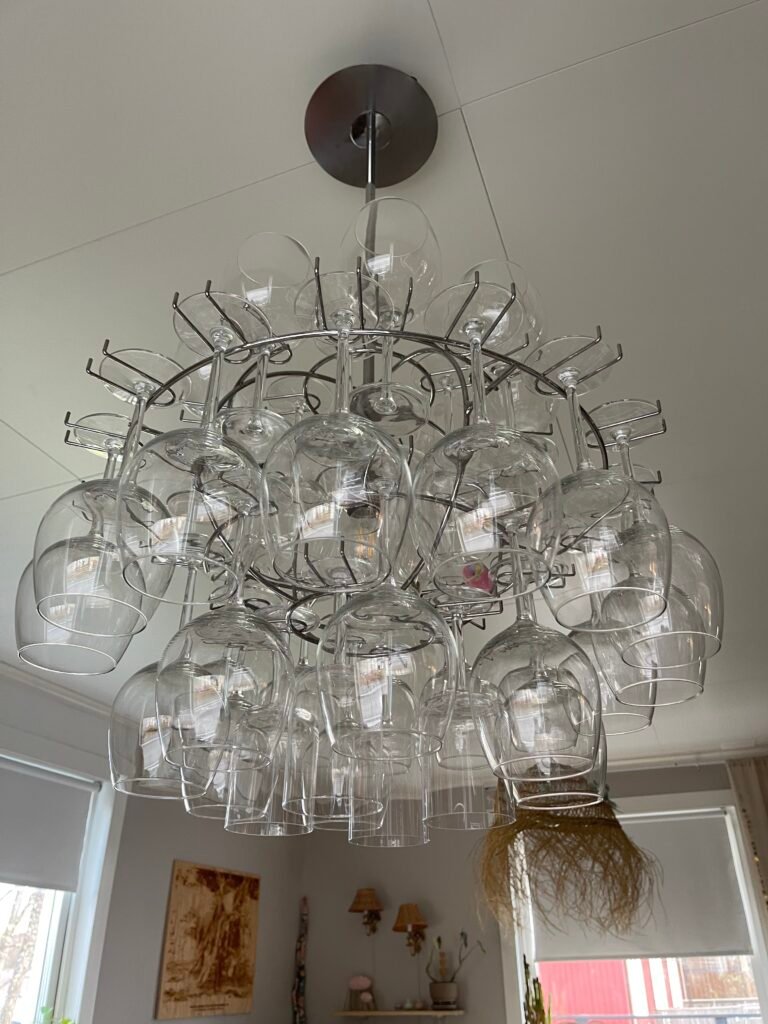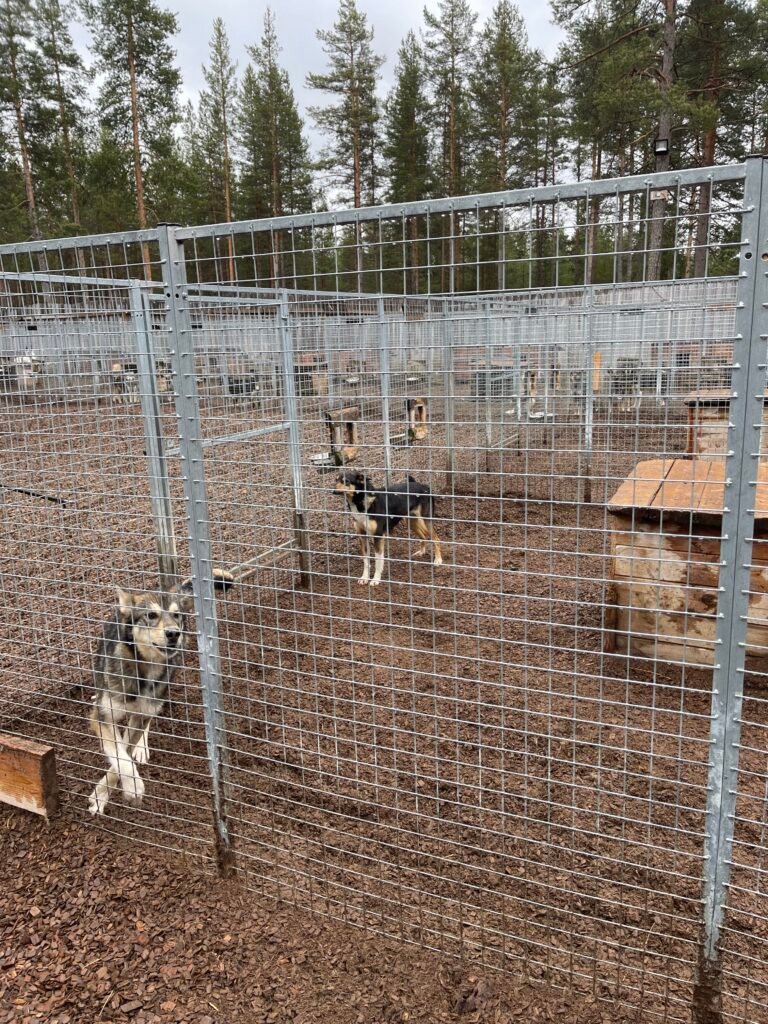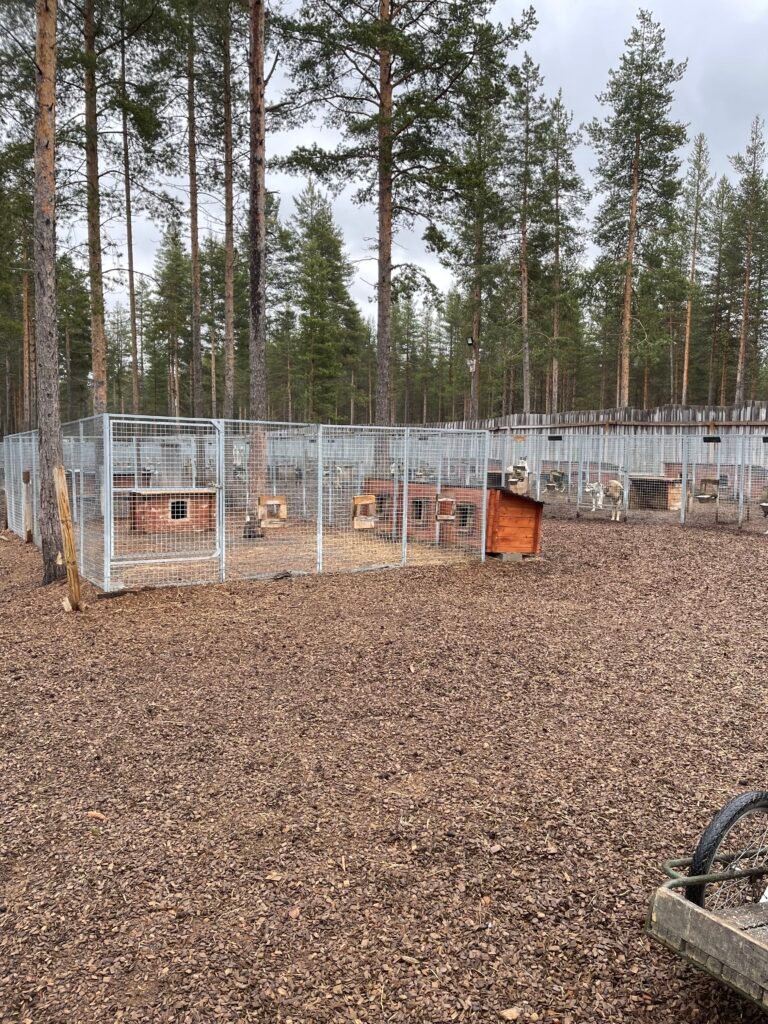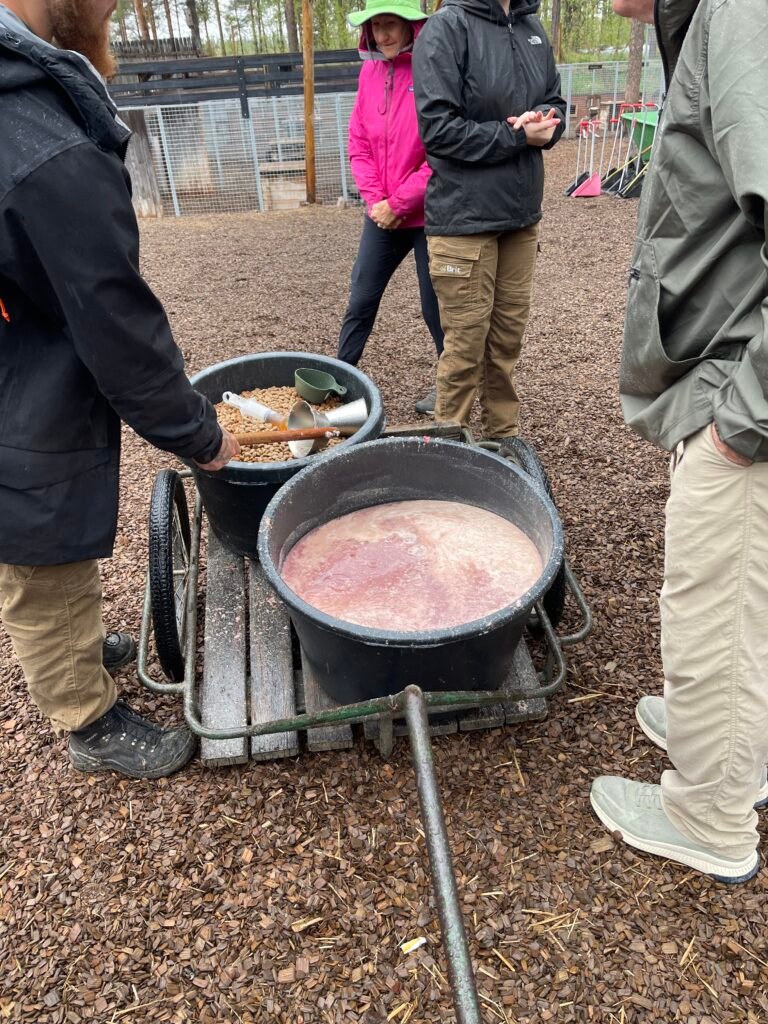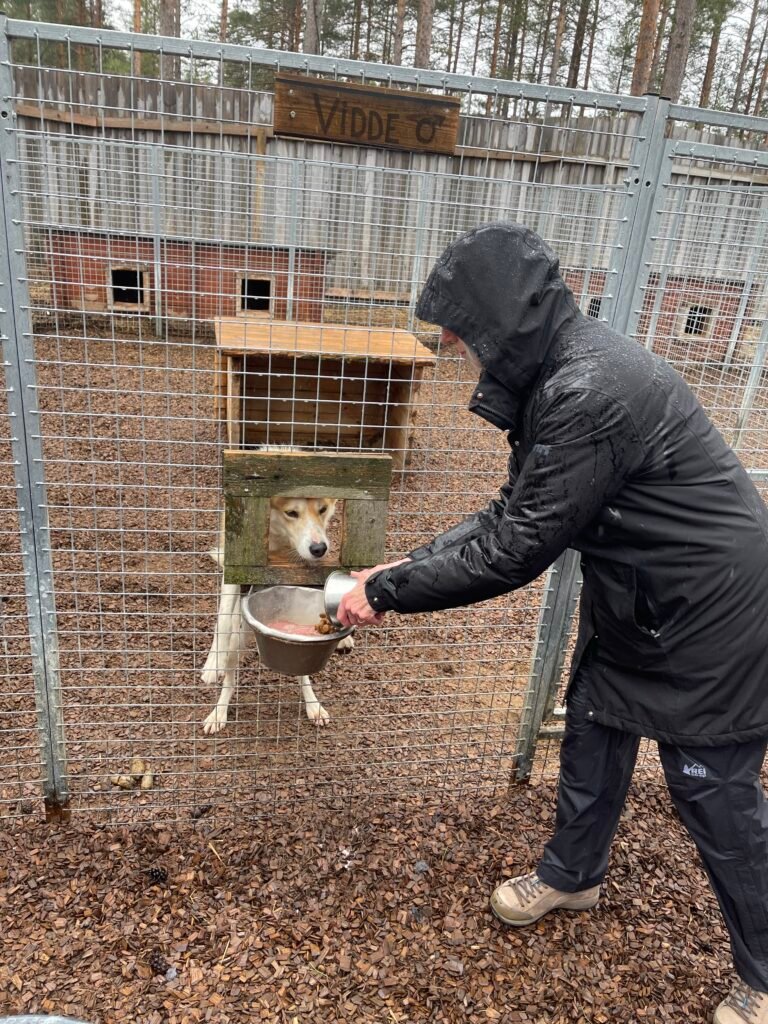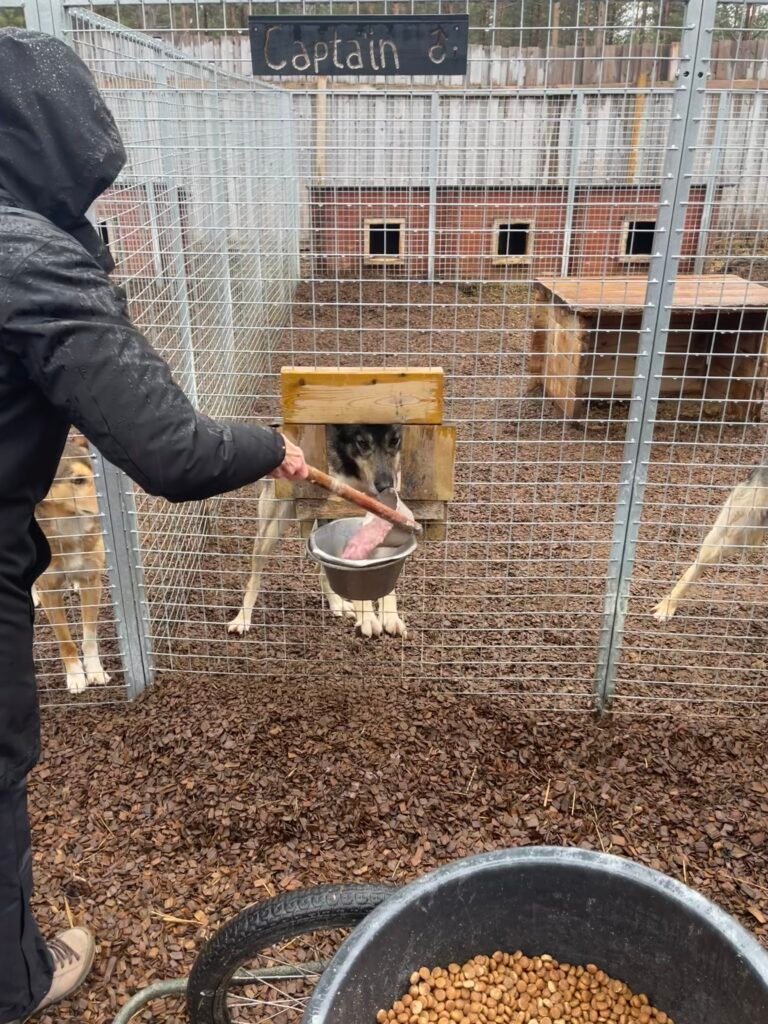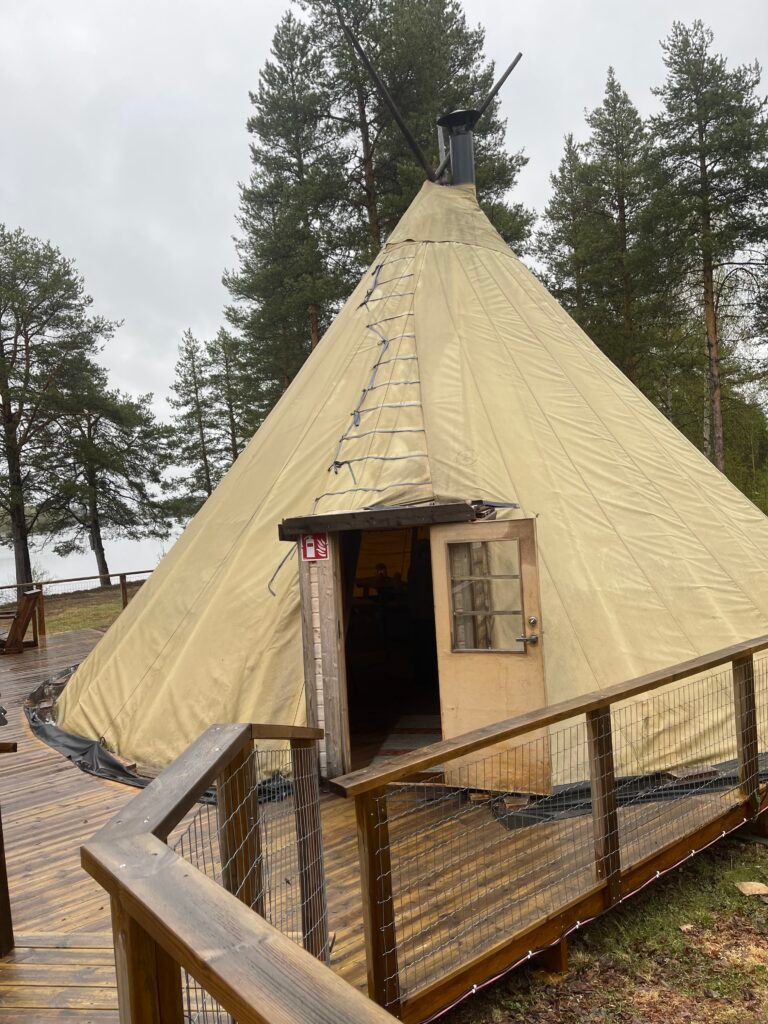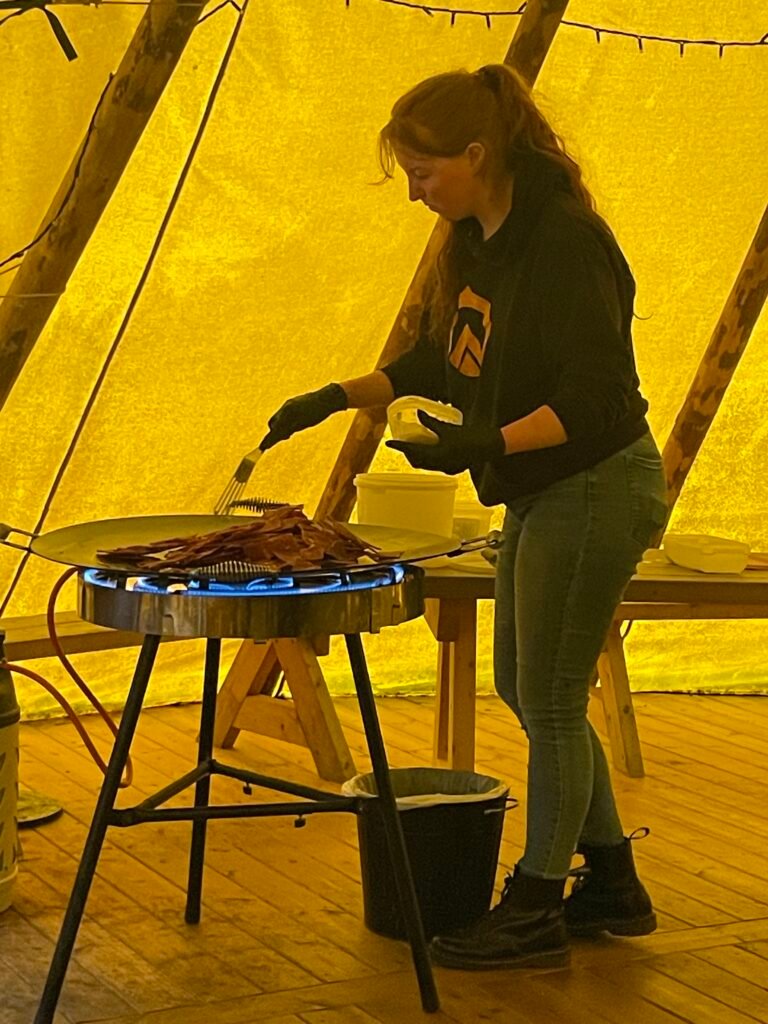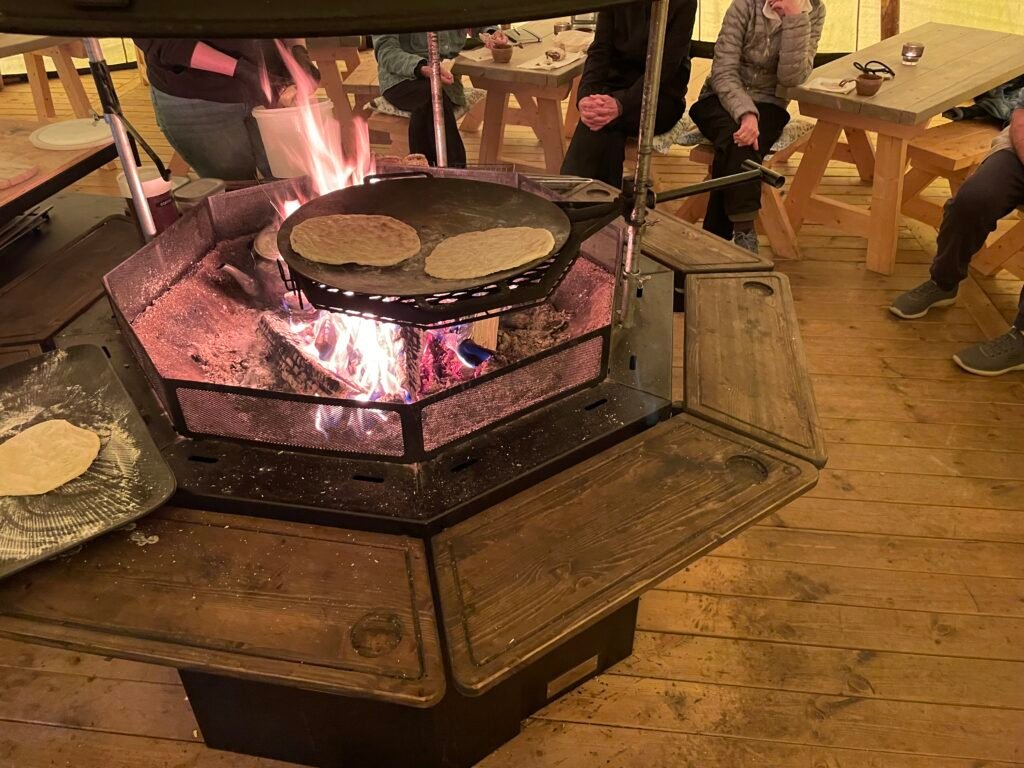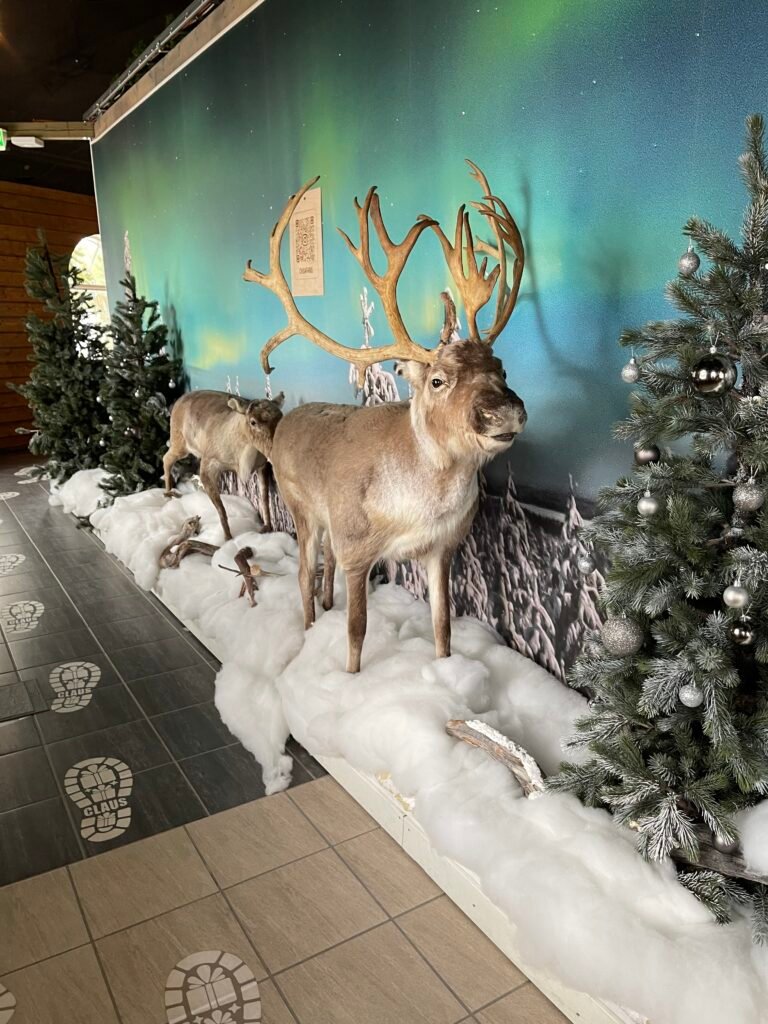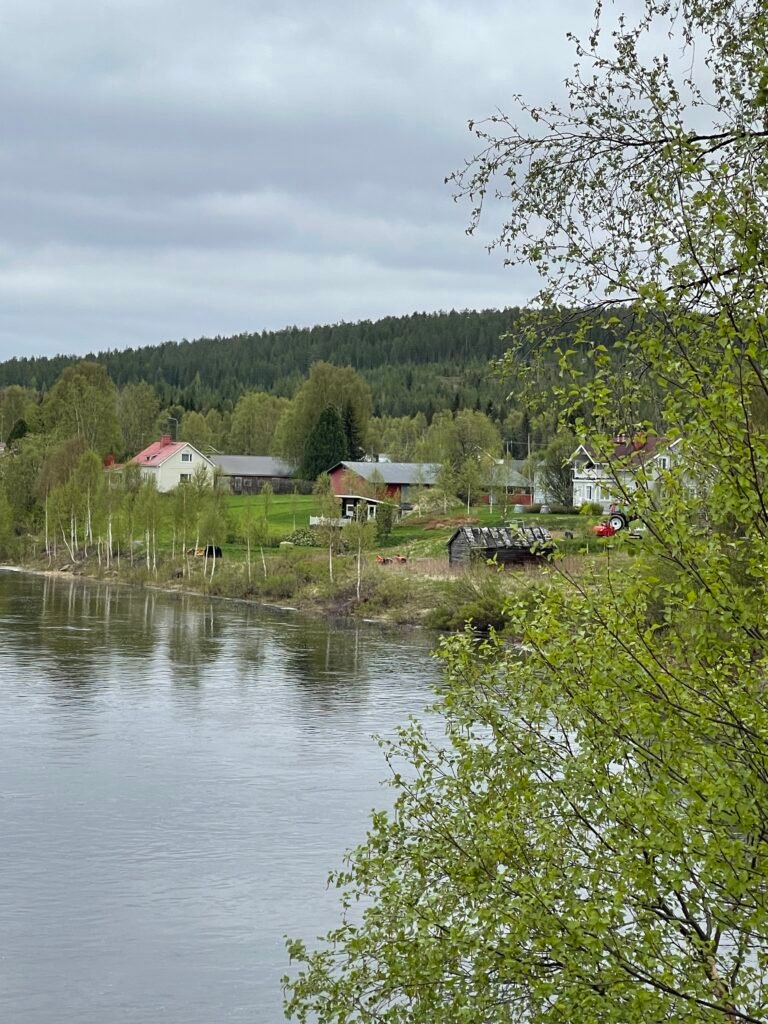Accommodations: Thon Lofote
After breakfast, we boarded our bus and drove to the first site of the day – Gimsøy church. The church is located right at the beach and apparently, due to its proximity to the water and without any barriers surrounding it, our guide said the church has been blown into the water a few times. That actually isn’t true. However, the church is now anchored with steel beams, cables, and rods to prevent it from blowing in the wind. The present church is a long wooden church and was inaugurated in 1876. The original church is first mentioned by Aslak Bolt in 1432. The church has been restored a few times over the years. There is an old cemetery at the church and Edmund Munch’s uncle is buried there.
Our next stop was to visit the Lofotr Viking museum. We listened to the museum guide tell us about the Vikings and then we went into the world’s longest reconstructed longhouse. We had reservations for lunch there and we all sat Viking style at long tables in front of a boiling cauldron where our lunch was simmering. Our guide told us more about how the people lived in the Viking age. Vikings from Norway were renowned for their raiding and exploring, often venturing into distant lands and establishing settlements. Vikings were also active traders, exchanging goods and establishing trade routes. The Viking Age in Norway is generally considered to have ended around the mid-11th century.
After the talk, we were served a delicious lamb soup, filled with root vegetables and lamb that was simmered for a long time in a broth. We had bread with it as well as mead. Mead is probably the most well-known of Viking drinks (mjød in Norwegian). It is an alcoholic beer-like brew sweetened with honey. It was very good! During lunch, a “Viking” came in and serenaded us with his lyre. The music was beautiful.
I asked about the recipe for the soup and they told me that rutabaga, carrots, leeks, celery, nettles, barley, Jerusalem artichoke, celery root, diced lamb, thyme, rosemary, salt, potatoes, and broth all went in and then it was simmered for hours. (I probably won’t be putting nettles in the soup if I try to make it.) And by the way, the man from the whaling restaurant yesterday sent me his recipe for potato soup. You can find the recipe at the bottom of this post.
After lunch we walked around and explored the “living museum”. We saw artifacts that were found during the archaeological excavations carried out in the period 1983-1989. It was a very interesting (and very filling, given the soup) morning and afternoon.
On our way back to our hotel, we stopped at an untitled glass and stainless steel work by Dan Graham, who actually hailed from New York. It is a huge concave mirror overlooking and reflecting the water and the mountains, a very unique piece of art.
We then stopped at Henningsvaer, a quaint fishing village, where we could walk around and browse the shops. Allan and I had a cup of coffee and a cinnamon roll and enjoyed the sunshine.
Dinner was chicken and barley at the hotel and then it was to bed because we have an early flight to Bergen in the morning.
The photos from today follow the soup recipe.
Creamy Potato and Leek Soup with Crispy Bacon
Ingredients:
• 1 leek (white part only), chopped
• 5 cloves of garlic, finely chopped
• 1 kg potatoes, peeled and chopped
• 2 liters chicken or vegetable broth
• 4 dl heavy cream
• 100 g crispy bacon
• Fresh parsley, finely chopped
• A drizzle of olive oil (for garnish)
Instructions:
1. Preparation: Wash and chop the leek, peel and chop the potatoes, and finely chop the garlic.
2. Cook the soup: Place the leek, garlic, potatoes, and broth in a large pot. Bring to a boil and let it simmer for about 20 minutes, or until the potatoes are tender.
3. Blend the soup: Use an immersion blender or a regular blender to puree the soup until smooth. Be cautious if using a blender with hot soup.
4. Add cream: Stir in the heavy cream and let the soup simmer for another 5 minutes. Season with salt and pepper to taste.
5. Garnish and serve: Serve the soup in bowls and top with crispy bacon, fresh parsley, and a small drizzle of olive oil as garnish.

The scenery is undeniably beautiful here in Norway. Dandelions grow all over and make for a beautiful yellow carpet wherever you look. Makes you wonder why we are so anxious to dig them up at home.
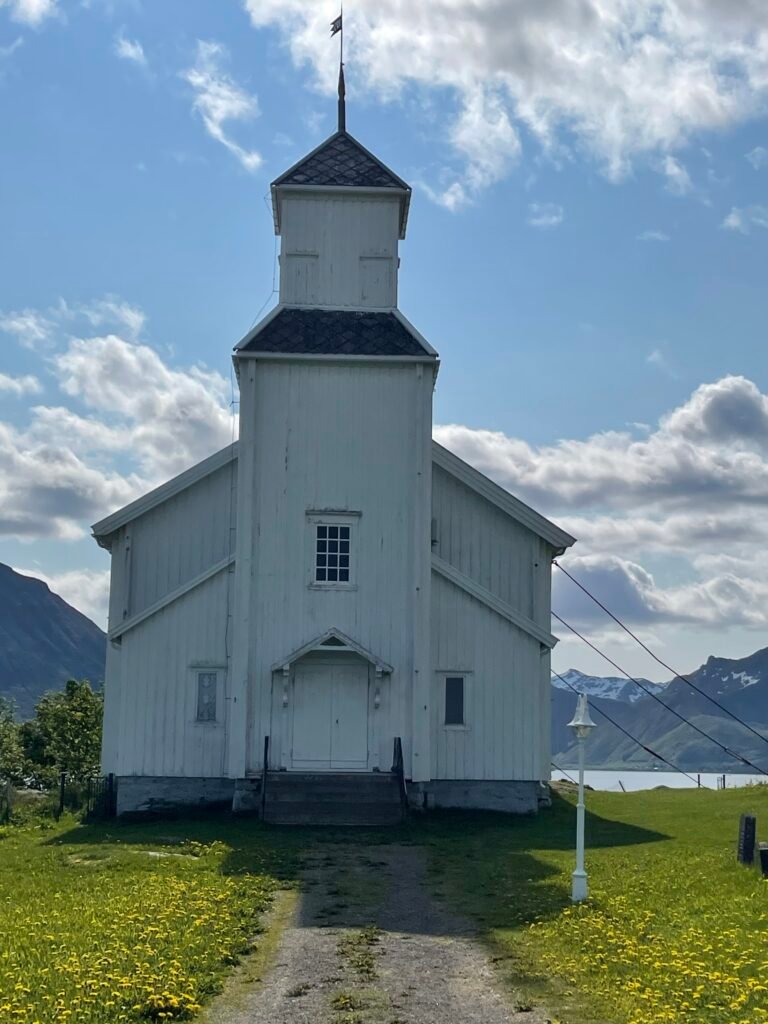
Gimsøy church

Anchoring the church

The scenery is always changing and always beautiful.
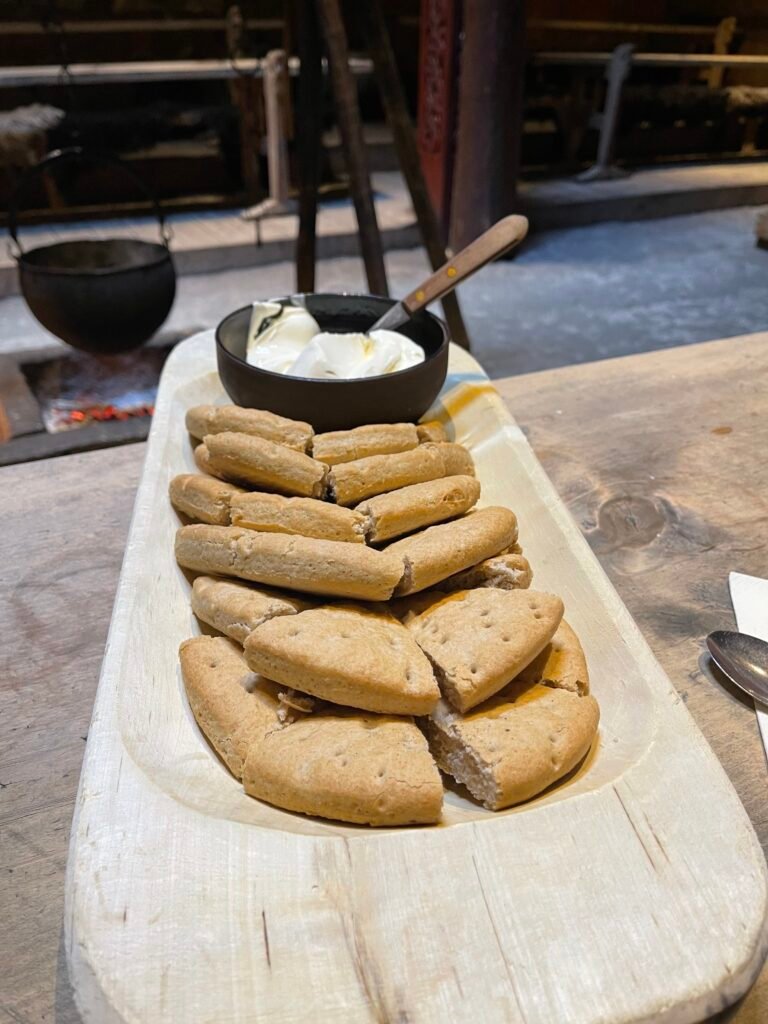
Bread and sour cream for our soup.
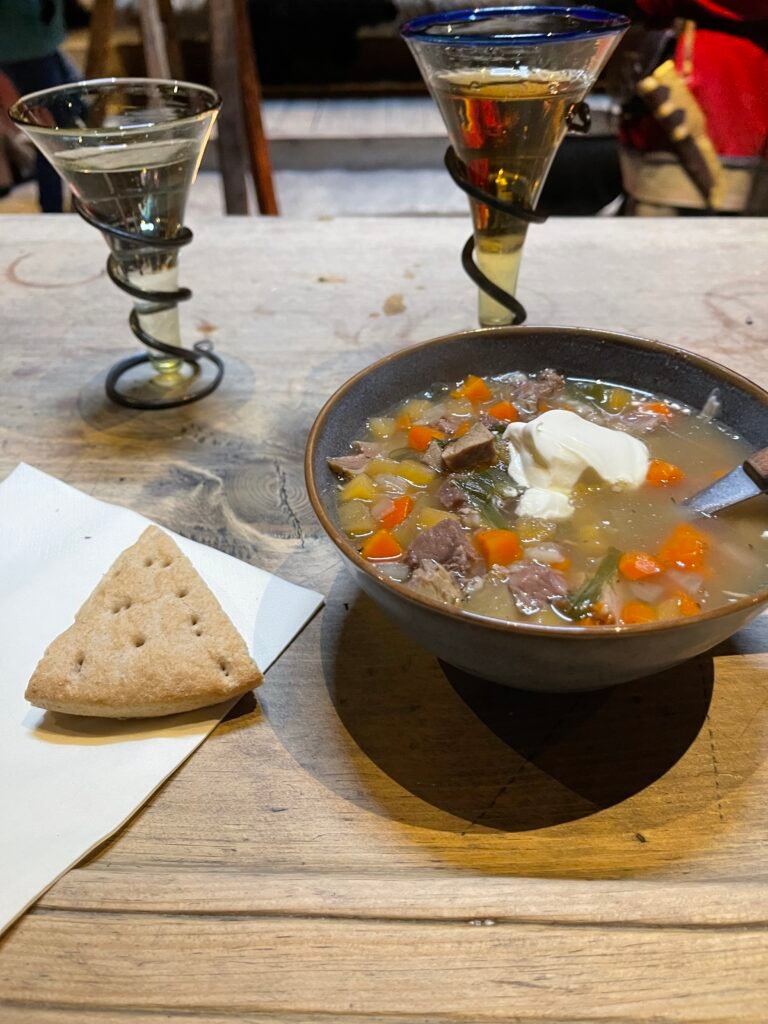
Our delicious lamb soup with mead and water. Love the holders for the glasses.

The lyre

Stockfish drying.

Dan Graham’s artwork

His mirror reflecting the water and mountains.


